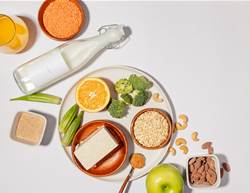Reducing your kilojoule intake isn’t always easy. Consuming less food just means you’ll be hungrier, right? Not necessarily. Enjoying nutritious, low-kilojoule foods that are actually filling can help keep you satisfied (exercise and sleep are important, too!) without a constantly growling stomach.
In fact, focusing just on kilojoule deficit rather than satisfaction can backfire. “Consuming all low kilojoule foods will keep your kilojoule count low, but likely will not keep you full and satisfied. This is not ideal because this will cause more hunger and usually leads to excessive snacking and possibly binge eating,” explains dietitian Jessica Zinn.
Look for low-kilojoule foods that contain an adequate amount of protein and fibre, or consider pairing a lighter food with a good source of healthy fats. When fibre, protein and fat are consumed together, you will be fuller for longer, says Zinn.
Try high-fibre carbohydrates like whole-grain bread, fruit, beans and lentils, or go for proteins from meat and dairy sources. If you follow a vegan or vegetarian diet, look for high-protein, plant-based foods. Put together a low-kilojoule meal with whole foods (like fresh vegetables, fruits, and proteins) for the biggest nutrition bang for your buck, rather than processed ones (like shakes and supplements), says dietitian Diana Sugiuchi.
But what foods should you add to your grocery list? Here are the best filling, low-kilojoule foods to keep stocked in your pantry and fridge to help you reach a weight loss goal safely, according to dietitians.
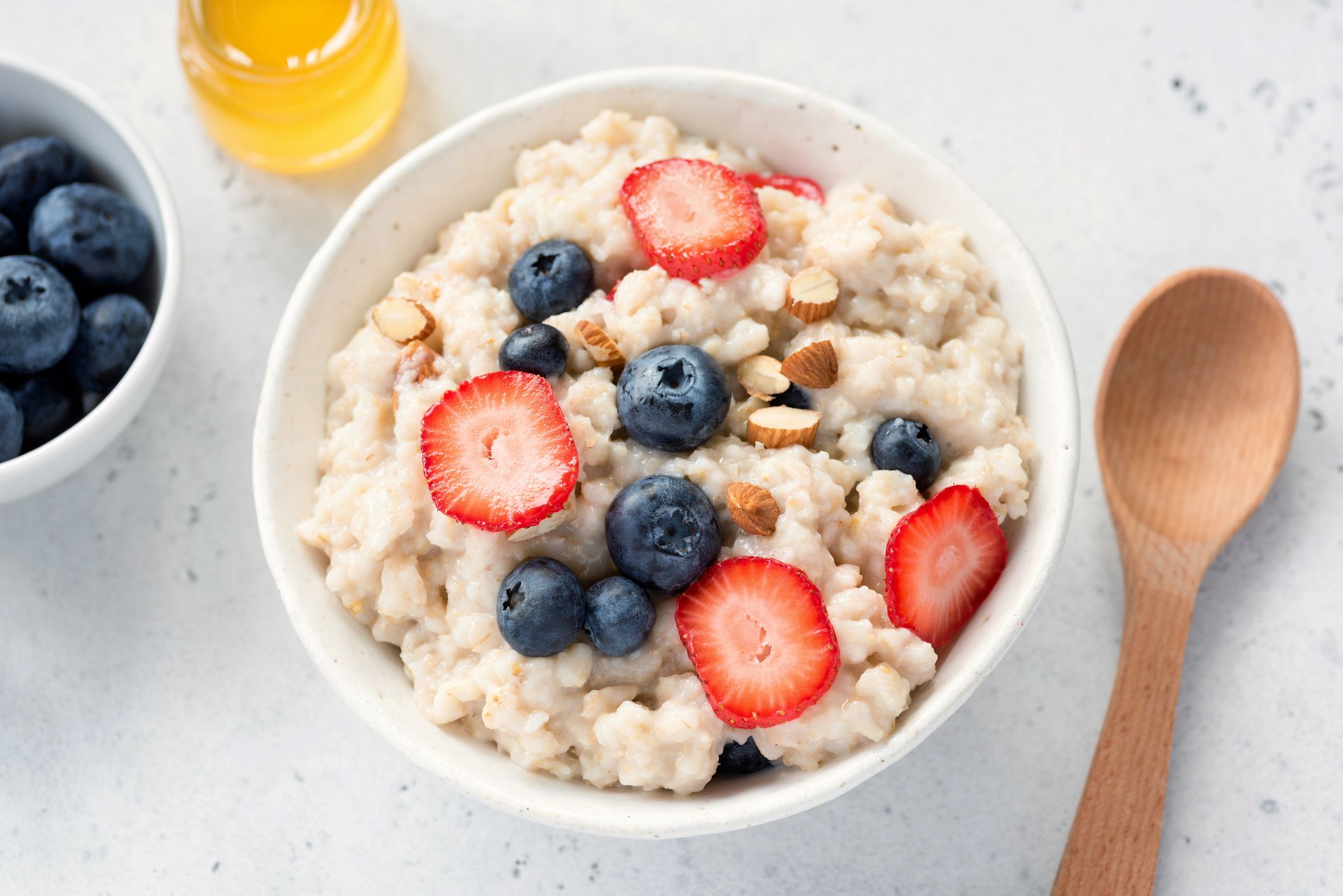
©Getty Images
1) Oatmeal
Oatmeal is shockingly low in kilojoules compared with other breakfast staples, at just 695kJ per cup, cooked (and you may only need ½ cup per person).
Oats are a good source of carbs and fibre and contain more essential amino acids than other grains, making them a quality source of protein.
If your morning bowl doesn't quite fill you up, try stirring in half a cup of plain Greek yoghurt, recommends dietitian Shana Spence.
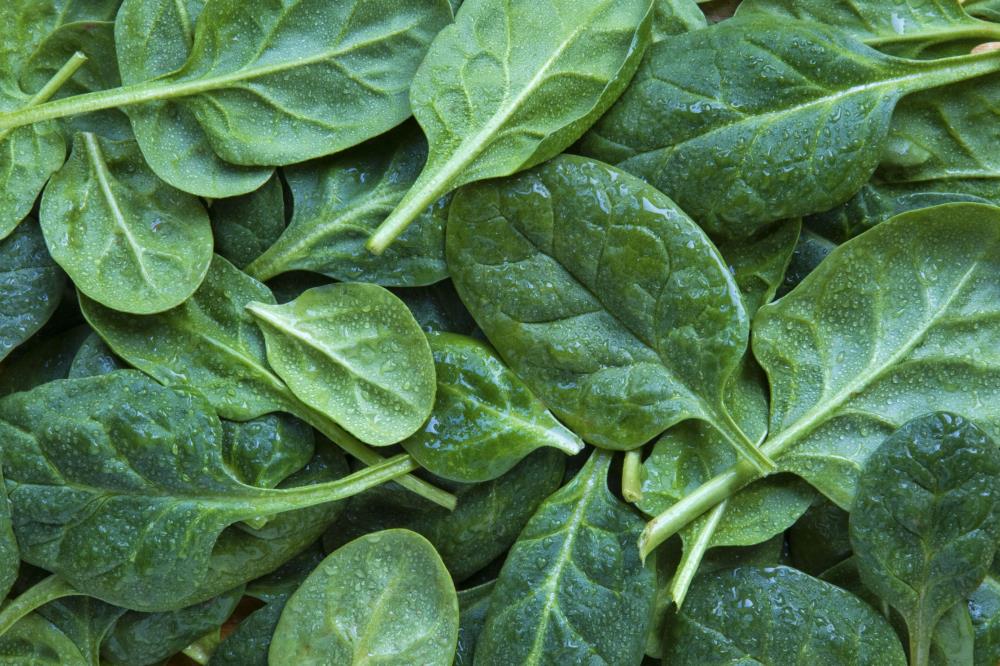
©Getty Images
2) Spinach
All kinds of veggies are great for filling you up without adding a ton of kilojoules, Sugiuchi says. Spinach has 29kJ per cup and is virtually flavourless, yet loaded with nutrients and antioxidants such as vitamin K, manganese, folate, and magnesium.
The high-fibre pick will make meals more filling and may benefit your digestion.
Add spinach to salads, pastas, smoothies and curries.
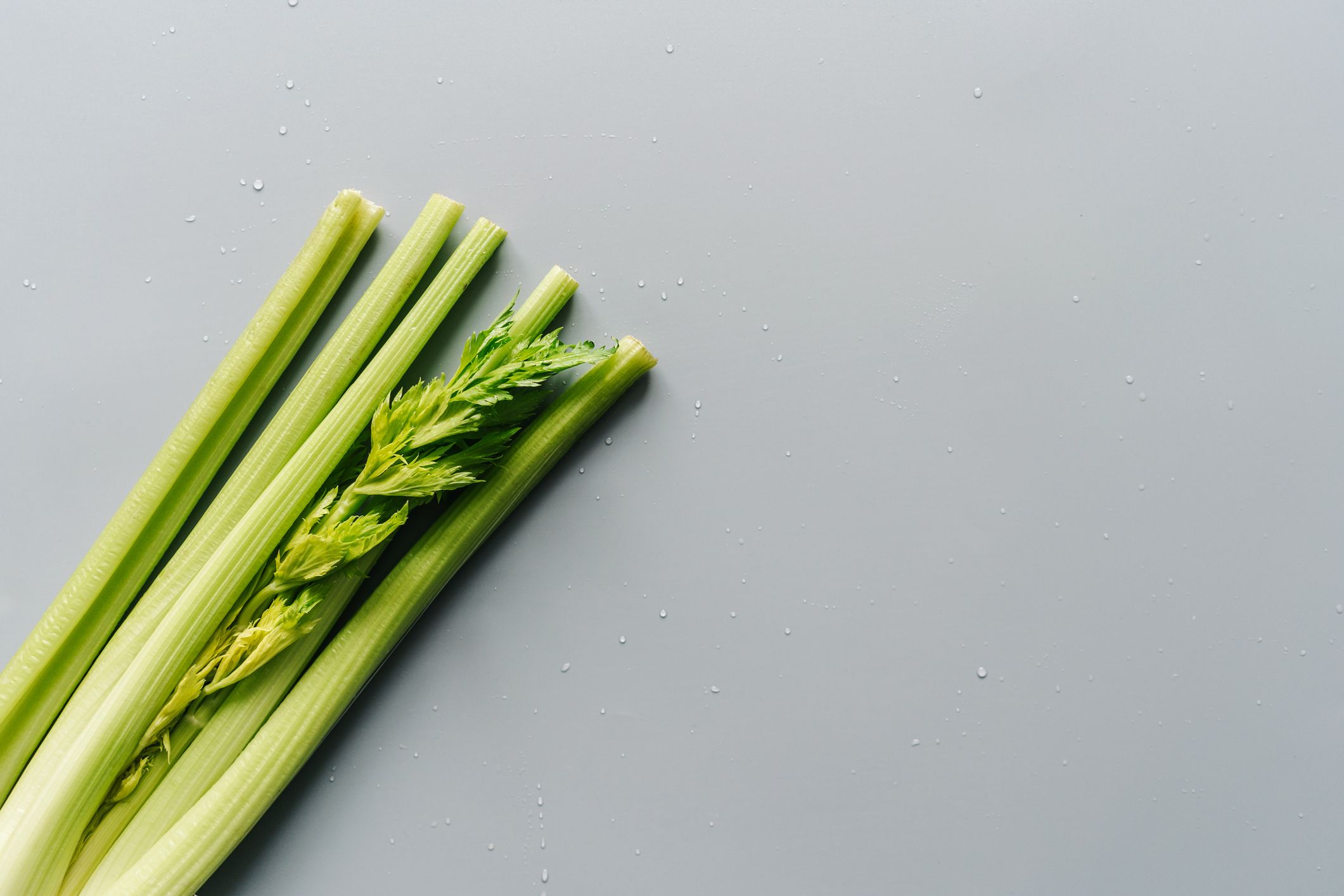
©Getty Images
3) Celery
Celery is one of nature’s lowest-kilojoule foods: it has about 22kJ per stalk. It also boasts antioxidant and anti-inflammatory nutrients.
Juicing celery may be popular, but some dietitians say to enjoy it whole: “You get nothing unique by juicing celery, but you do lose the fibre,” says dieitian Erin Palinski-Wade. And fibre is key for slowing digestion and helping you feel fuller, longer.
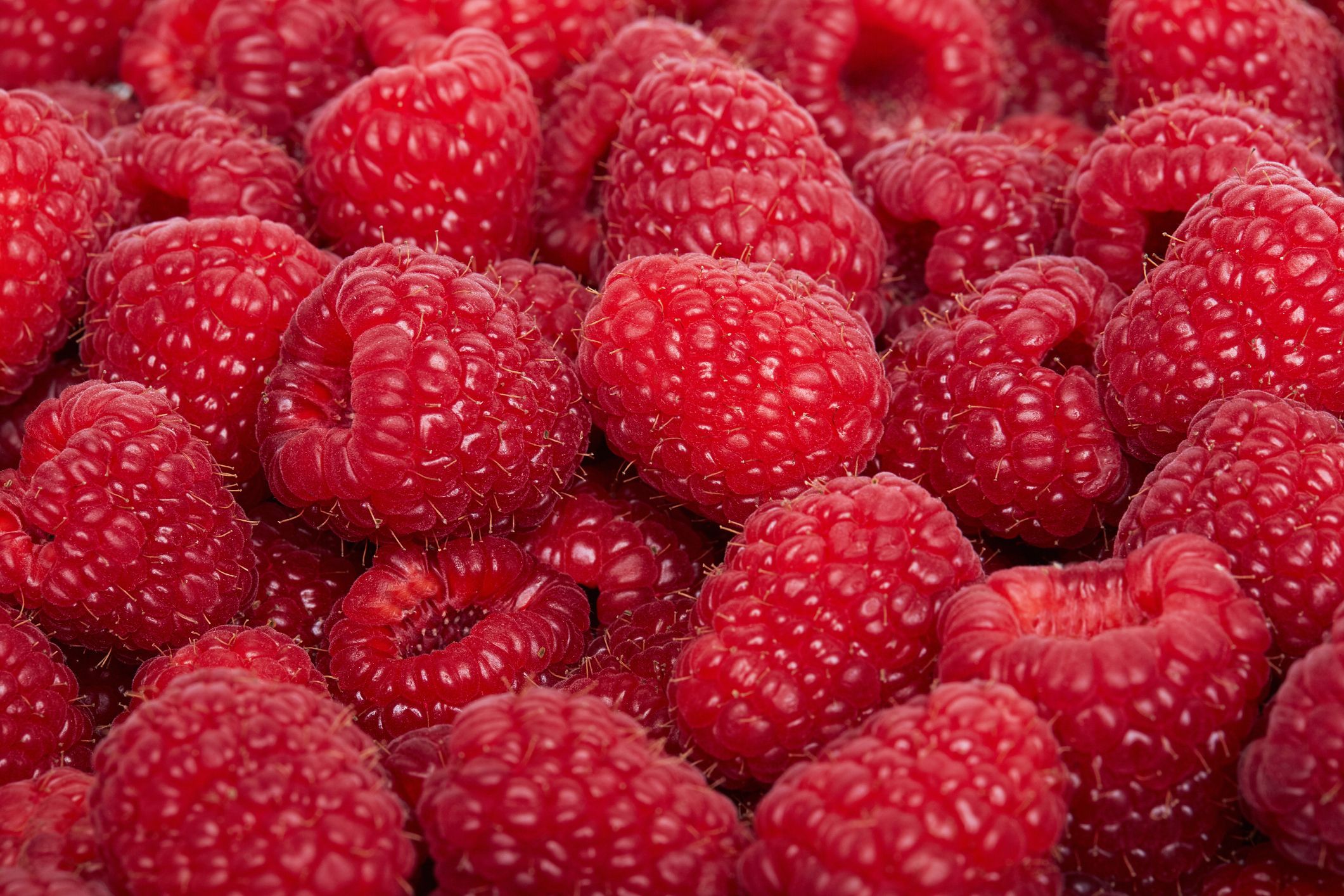
©Getty Images
4) Raspberries
Craving dessert? These berries have a naturally sweet taste with very few kilojoules (271kJ per cup), along with 8 grams of fibre. That’s around a third of what you should get in an entire day.
Raspberries are also a great source of vitamin C, which plays an important role in immune function and improves the absorption of iron.
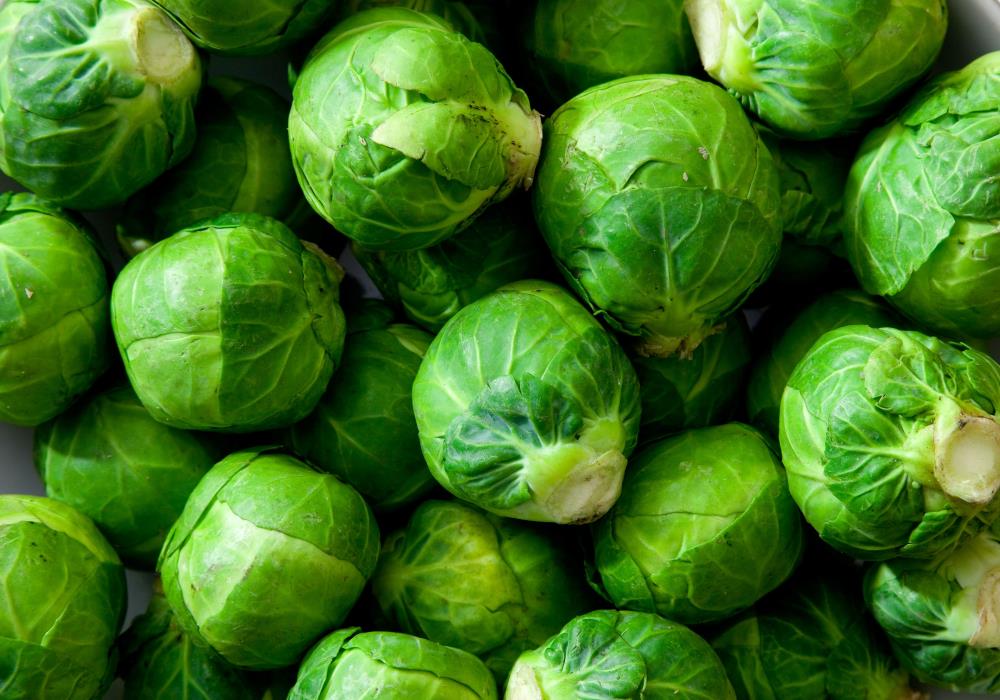
©Getty Images
5) Brussels sprouts
A favorite of Sugiuchi’s during the colder months, Brussels sprouts can be enjoyed raw in a salad, not to mention roasted or pan-fried with other veggies. They offer about 292kJ per cup, and they're a great source of the all-important fibre and protein.
Brussels sprouts are especially rich in vitamin K, which is necessary for the synthesis of proteins involved in blood clotting and bone metabolism.
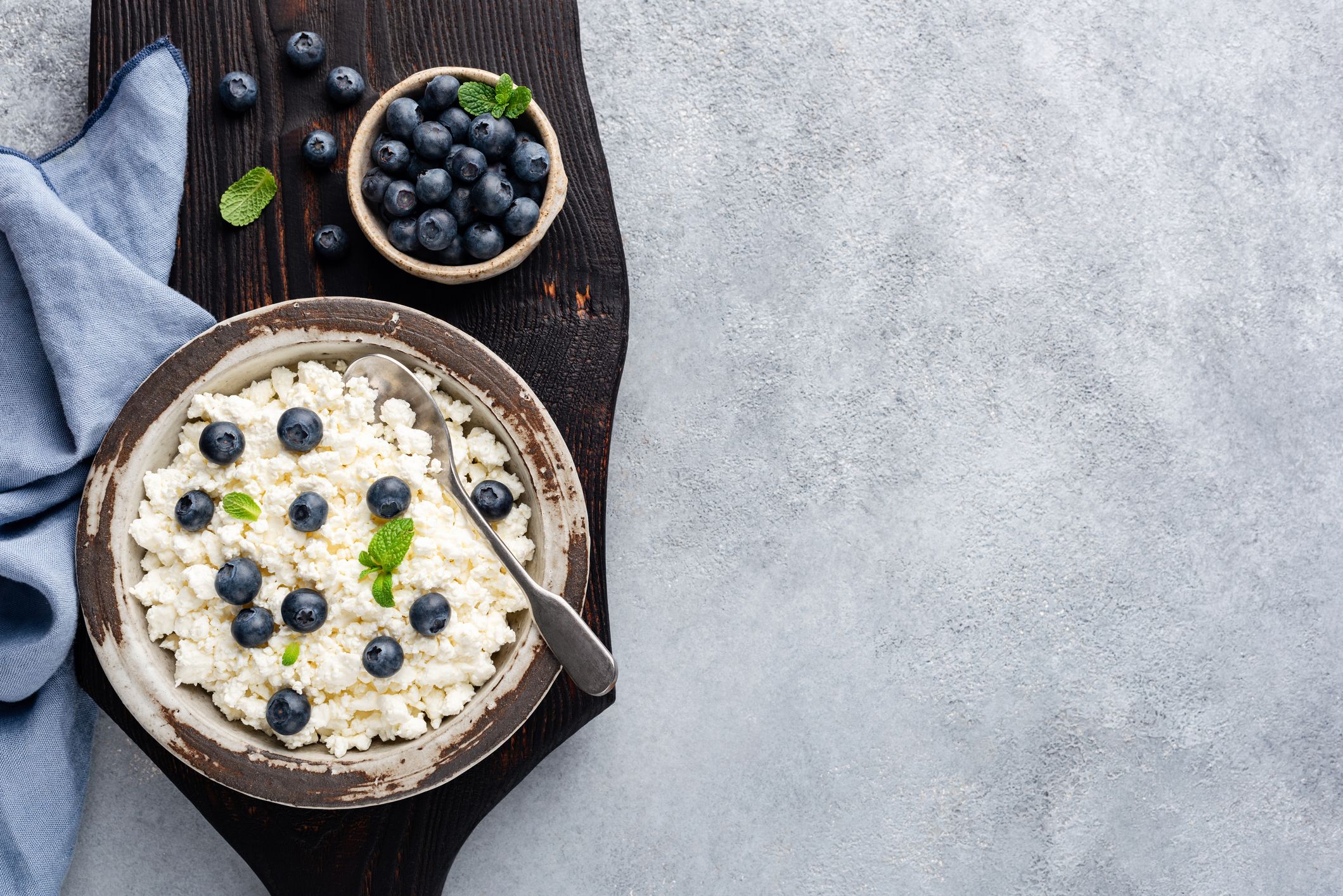
©Getty Images
6) Cottage cheese
Low-fat cottage cheese has about one-fifth of the kilojoules you’ll find in most cheeses (685kJ per cup), and it’s higher in protein, keeping your appetite in check for longer and your metabolism revved, Palinski-Wade says.
The type of protein found in cottage cheese, called casein, has been shown to facilitate muscle recovery when consumed before bed.
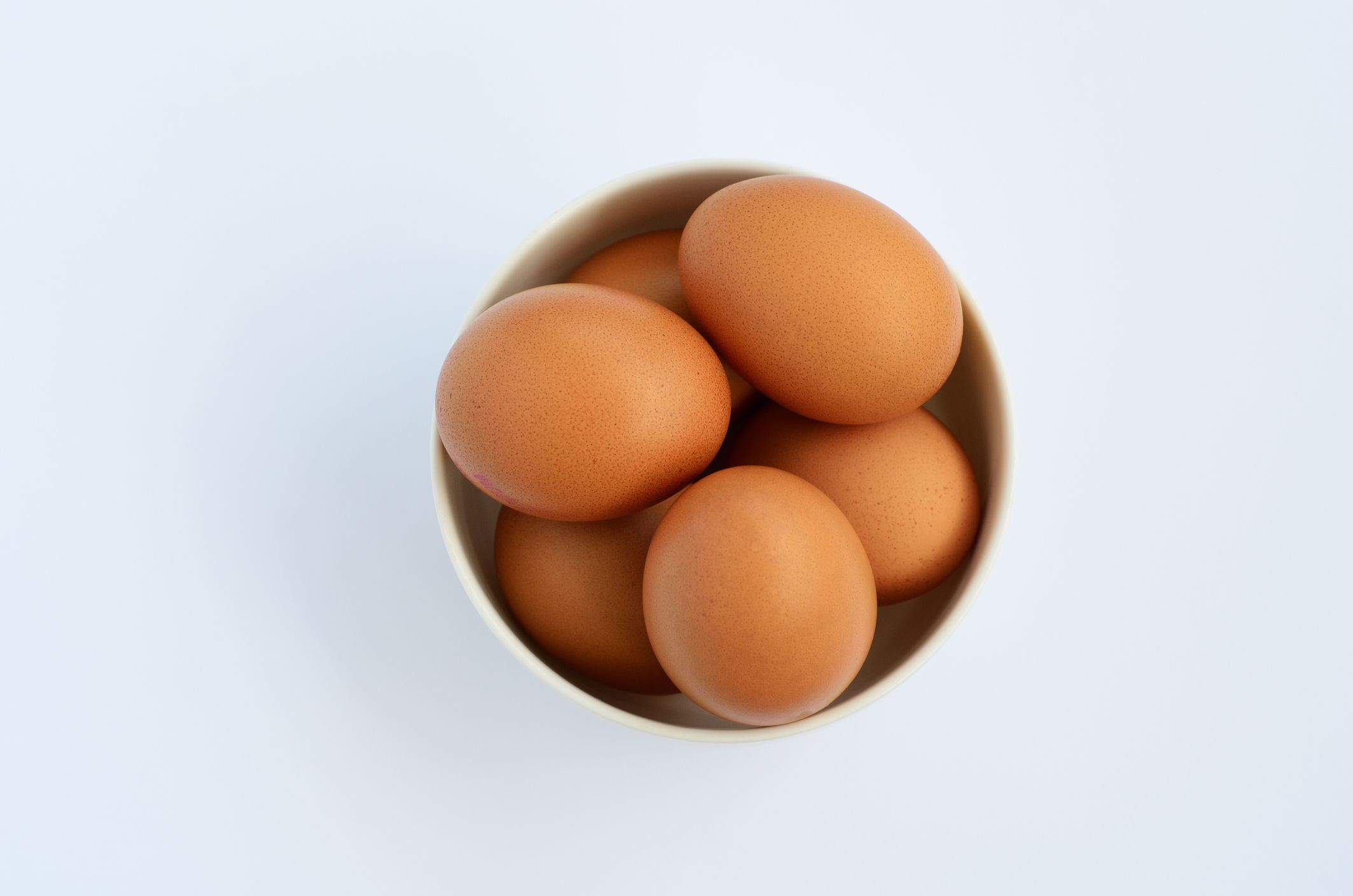
©Getty Images
7) Eggs
A large egg packs six grams of hunger-satisfying protein for just about 310kJ; not a bad trade-off, if you ask us. Research shows that eggs can curb your kilojoule intake at your next meal, too.
In addition to their low-kilojoule status, eggs are incredibly nutritious and contain a little bit of almost everything you need (vitamins, minerals, you name it). Omega-3 enriched and pasture-raised eggs tend to be even higher in nutrients.
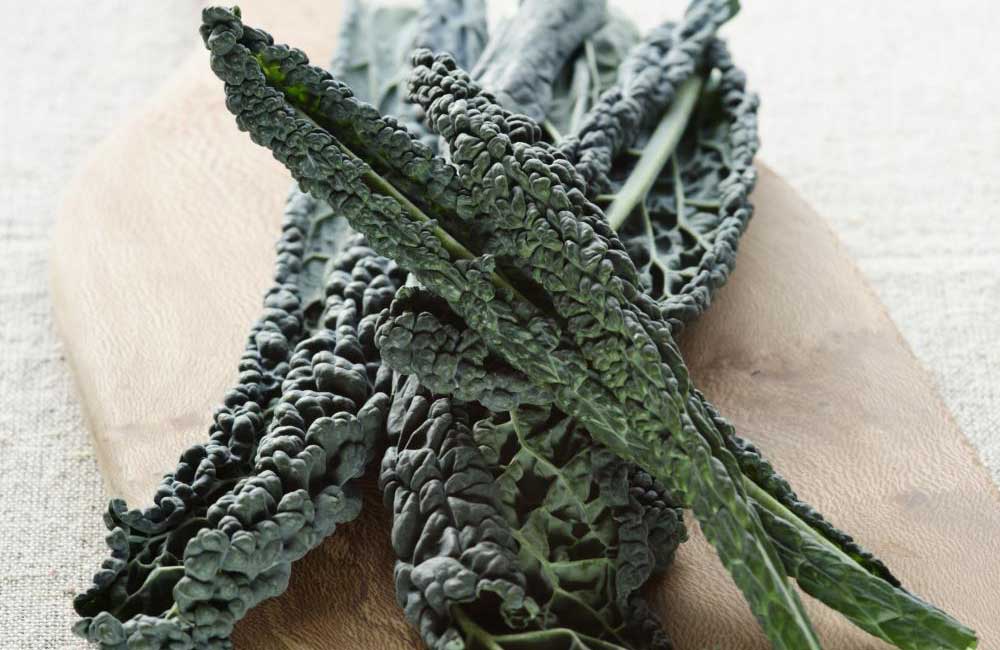
©Getty Images
8) Kale
Dark, leafy greens are definitely worth adding to your diet, Sugiuchi says. Although kale, which only has about 37kJ per cup, can be delicious raw in a salad, you don’t have to go so crunchy; wilt it into pastas or soups for an iron-rich boost.
A single cup also offers over half of your daily value of vitamin K.
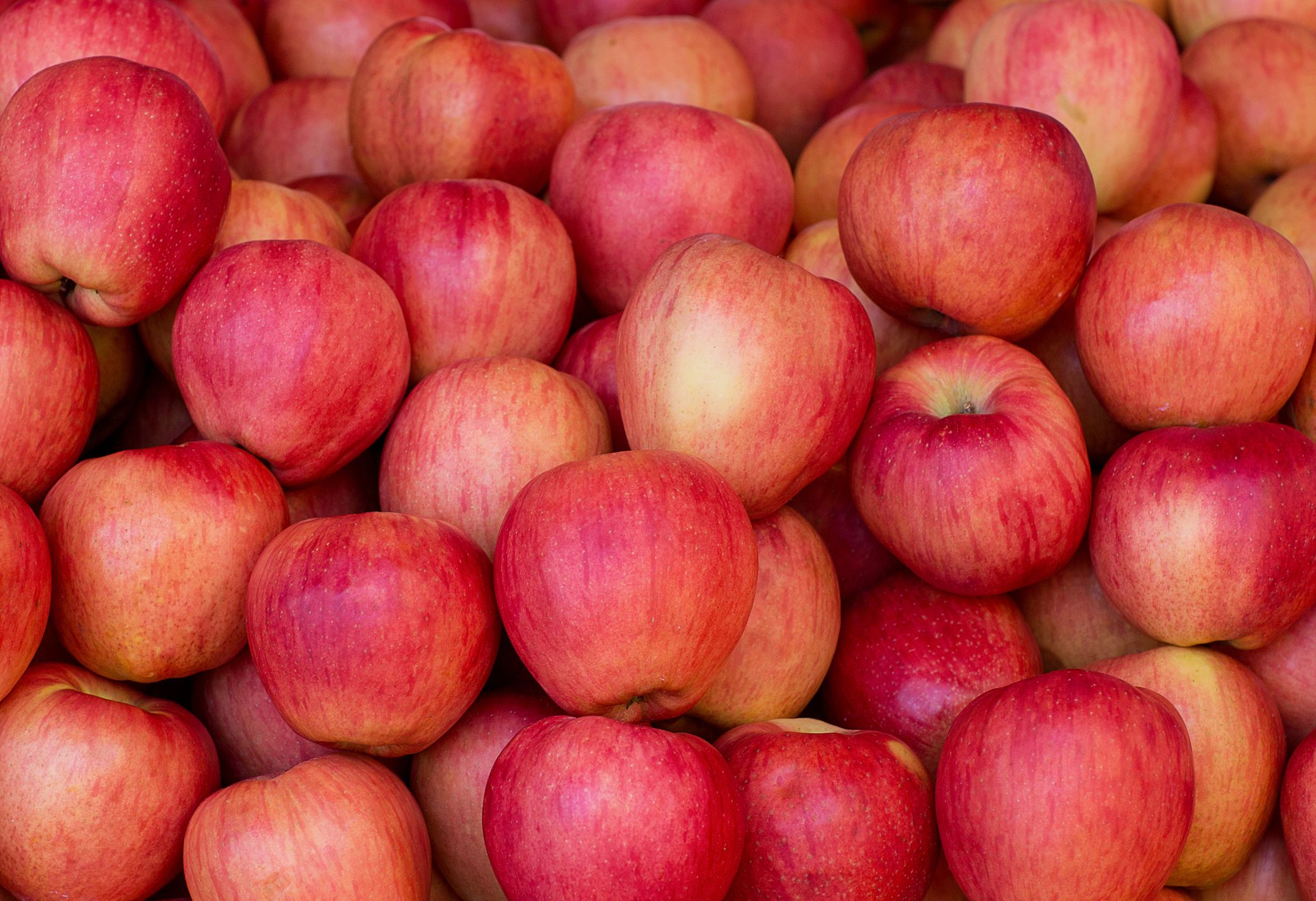
©Getty Images
9) Apples
Research suggests that apples, which clock in at about 237kJ per apple, are some of the best fruits for weight loss. In fact, one 2008 study found that participants who added three apples to their usual diet for 10 weeks lost almost a kilogram. You know what they say about an apple a day!
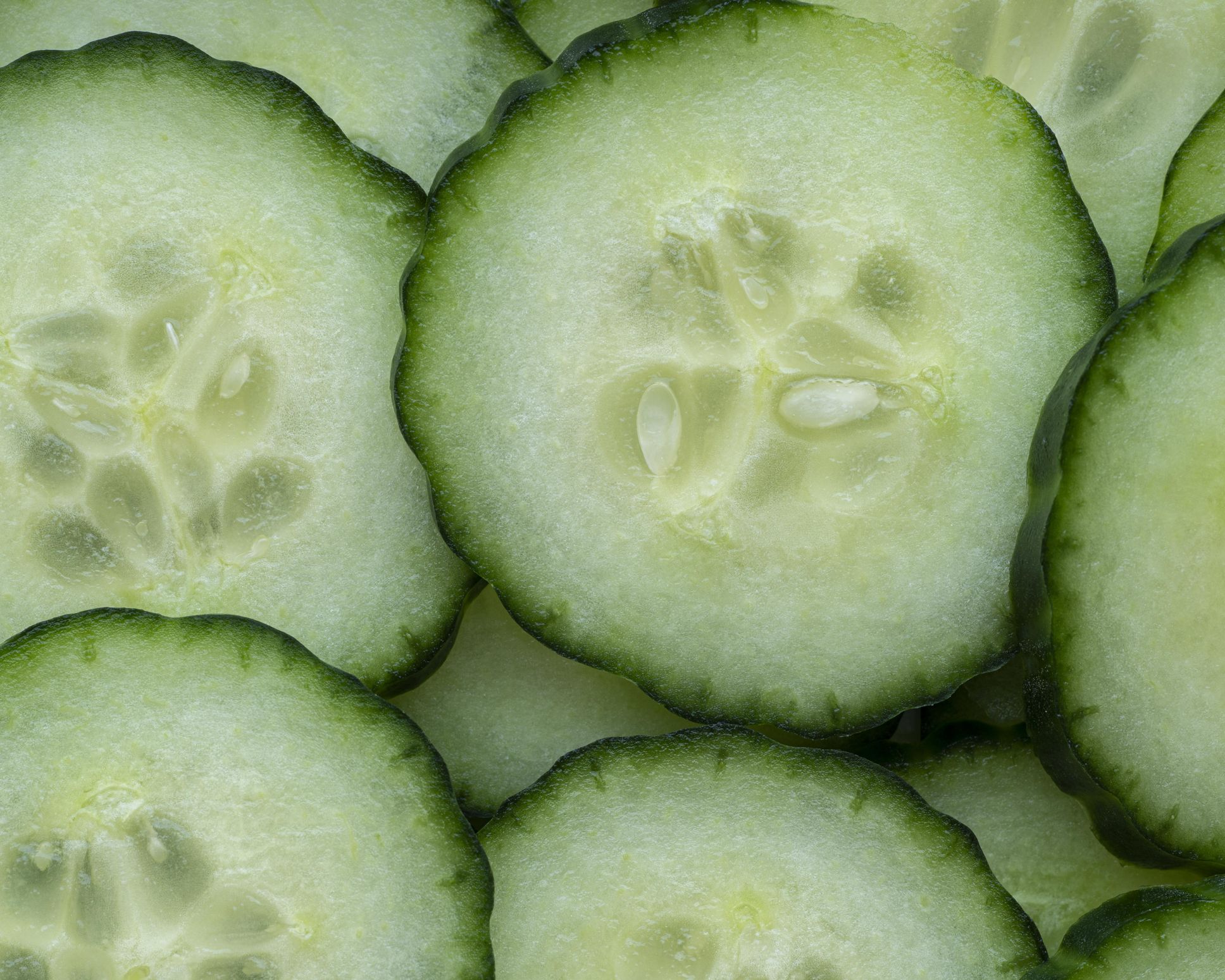
©Getty Images
10) Cucumber
Try cucumber as a dipper in place of starchy crackers the next time you make a dip or spread. A handful of your favourite chips will pale in comparison to an entire cucumber’s 196kJ.
Swapping in cukes will also give you a boost of hydration as well as fibre, which can help with your digestive health.
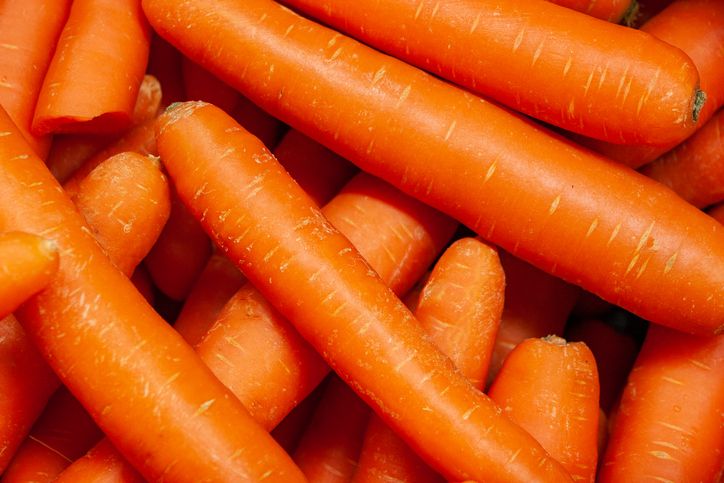
©Getty Images
11) Carrots
Don’t worry about the slightly elevated level of sugar in carrots: “They have tons of good vitamin A and lots of fibre, so eat up on those,” Sugiuchi recommends.
Carrots clock in at just under 125kJ per large carrot and yes, it's true that they support good vision. Their beta carotene converts to vitamin A in the body, which is essential for eye health.
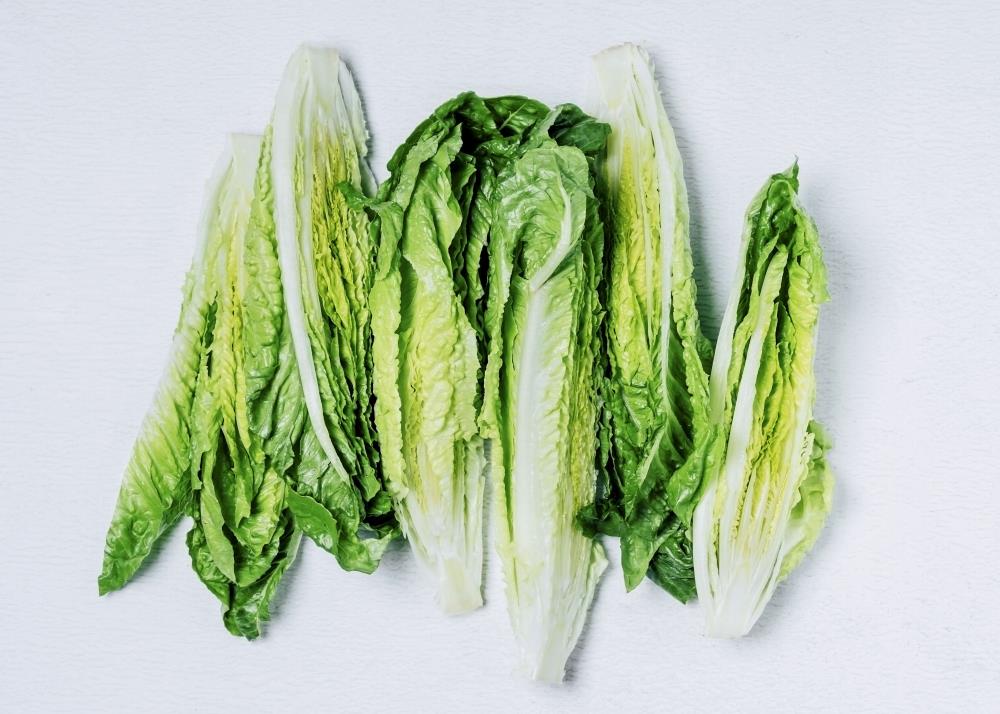
©Getty Images
12) Lettuce
Want to cut the kilojoules in your sandwich or wrap? Swap your bread or tortilla for romaine lettuce (either by creating a lettuce wrap or simply chopping up your sandwich ingredients into a salad). One cup has just 34kJ. Pair with protein like chicken or tofu to fill you up.
Lettuce is a good source of vitamin A and vitamin C, both of which are key for healthy skin.
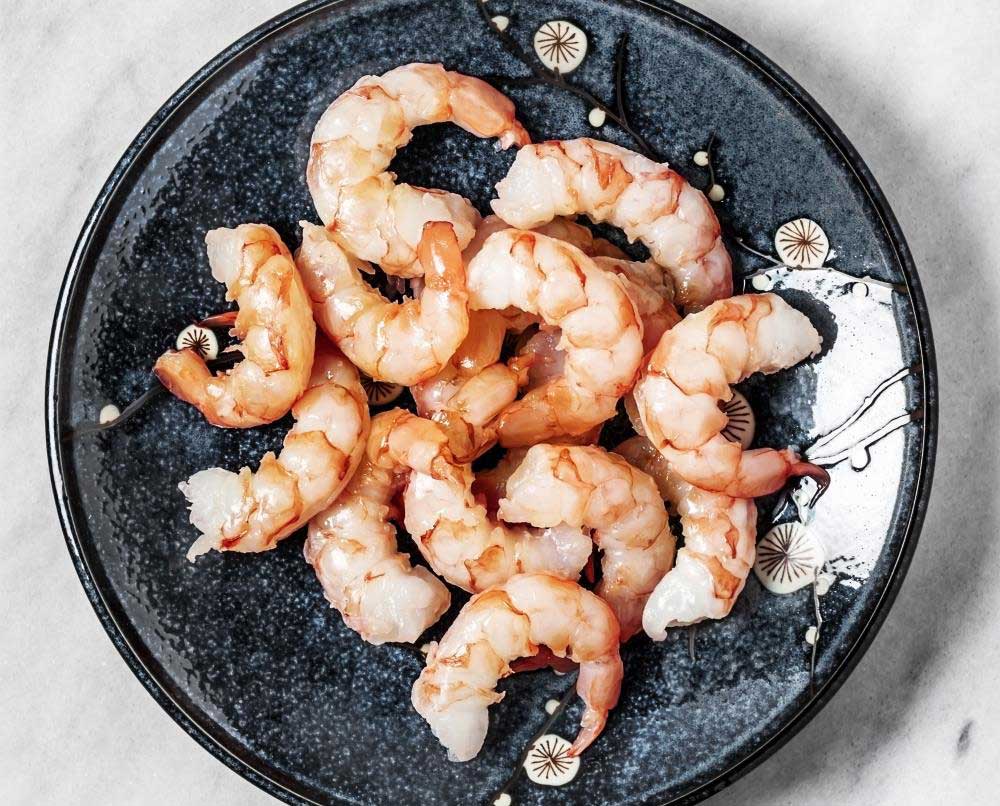
©Getty Images
13) Prawns
Prawns are a diet-friendly protein option, with under 420kJ per 100g serving. They’re also great for bumping up your protein intake, meaning they’ll leave you feeling fuller for longer, Sugiuchi says.
Prawns are also one of the best sources of iodine, an important mineral that's necessary for proper thyroid function. But they do have a bit of cholesterol, so it’s best to enjoy them in moderation.
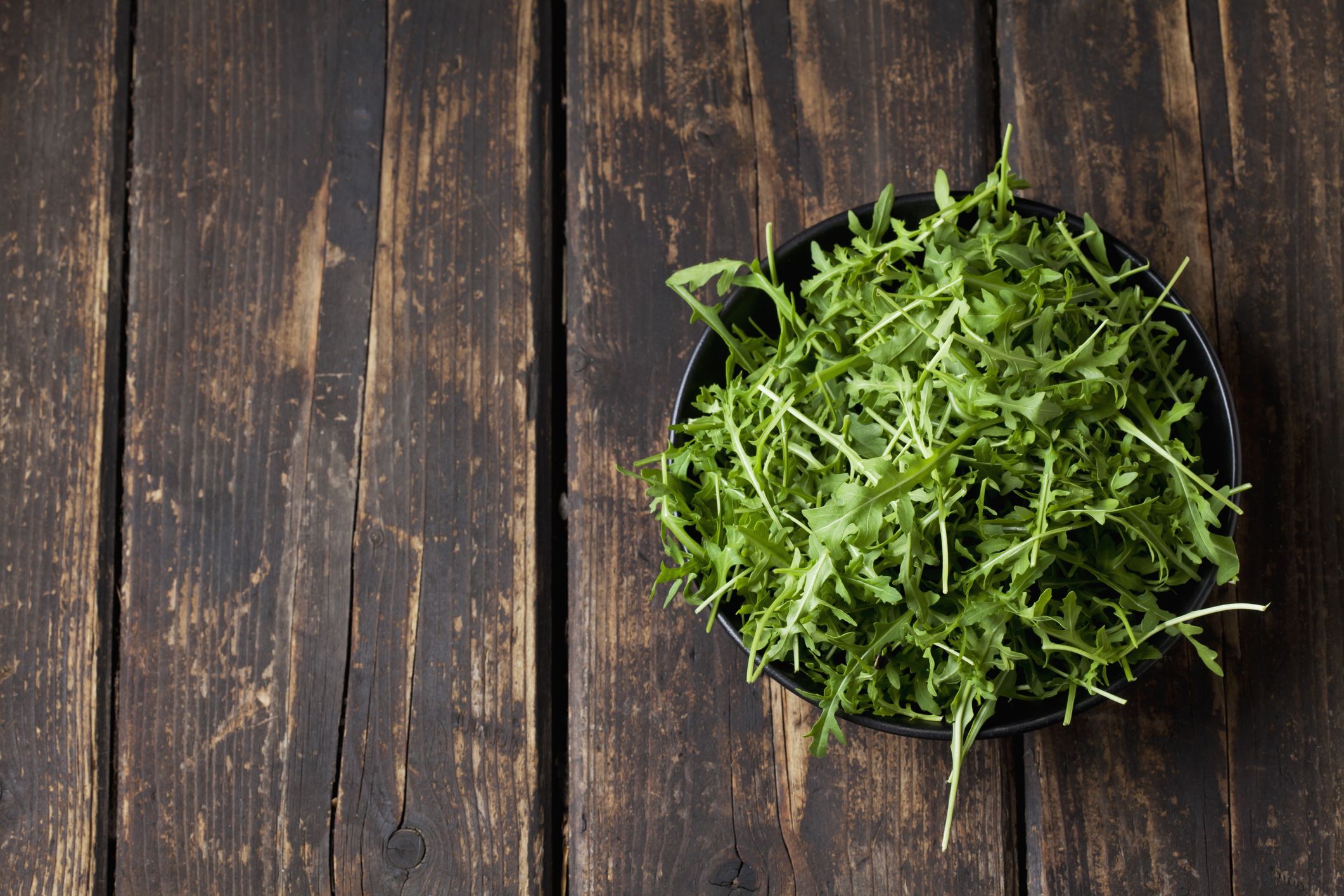
©Getty Images
14) Rocket
Like spinach and other leafy greens, rocket lets you go big on the serving size for very few kilojoules (just 21kJ per cup). It’s got a fresh, peppery flavor that shines in salads.
It offers about 15% of your daily value of vitamin K, which is important for blood clotting and bone health.
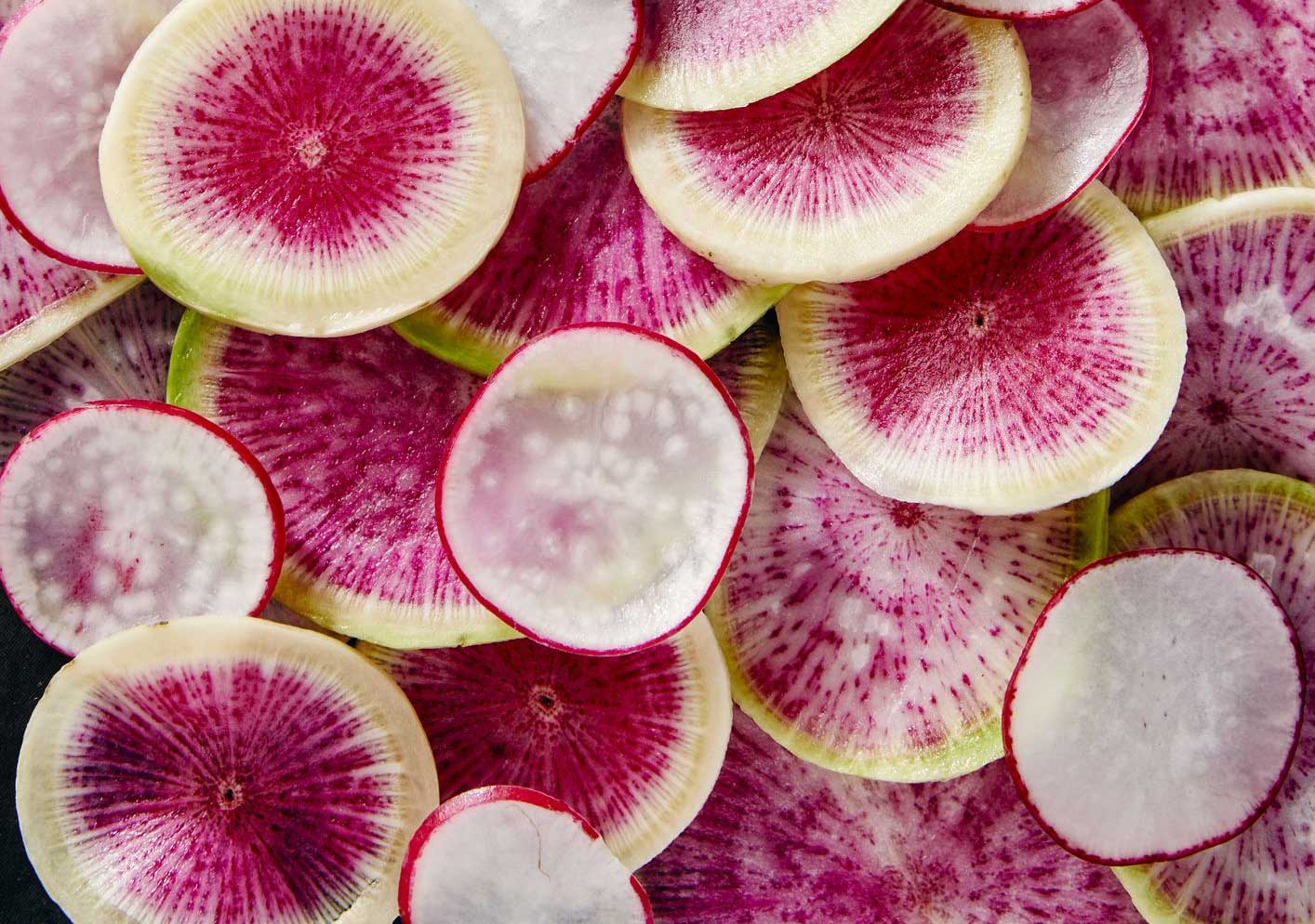
©Getty Images
15) Radishes
Craving a crunchy snack? You could have a handful of potato chips for around 150 calories—or a platter with half a cup of sliced radishes topped with sea salt for just about 38kJ!
The spicy, cruciferous veggies are full of antioxidants like vitamin C, which helps battle free radicals and prevent cell damage.
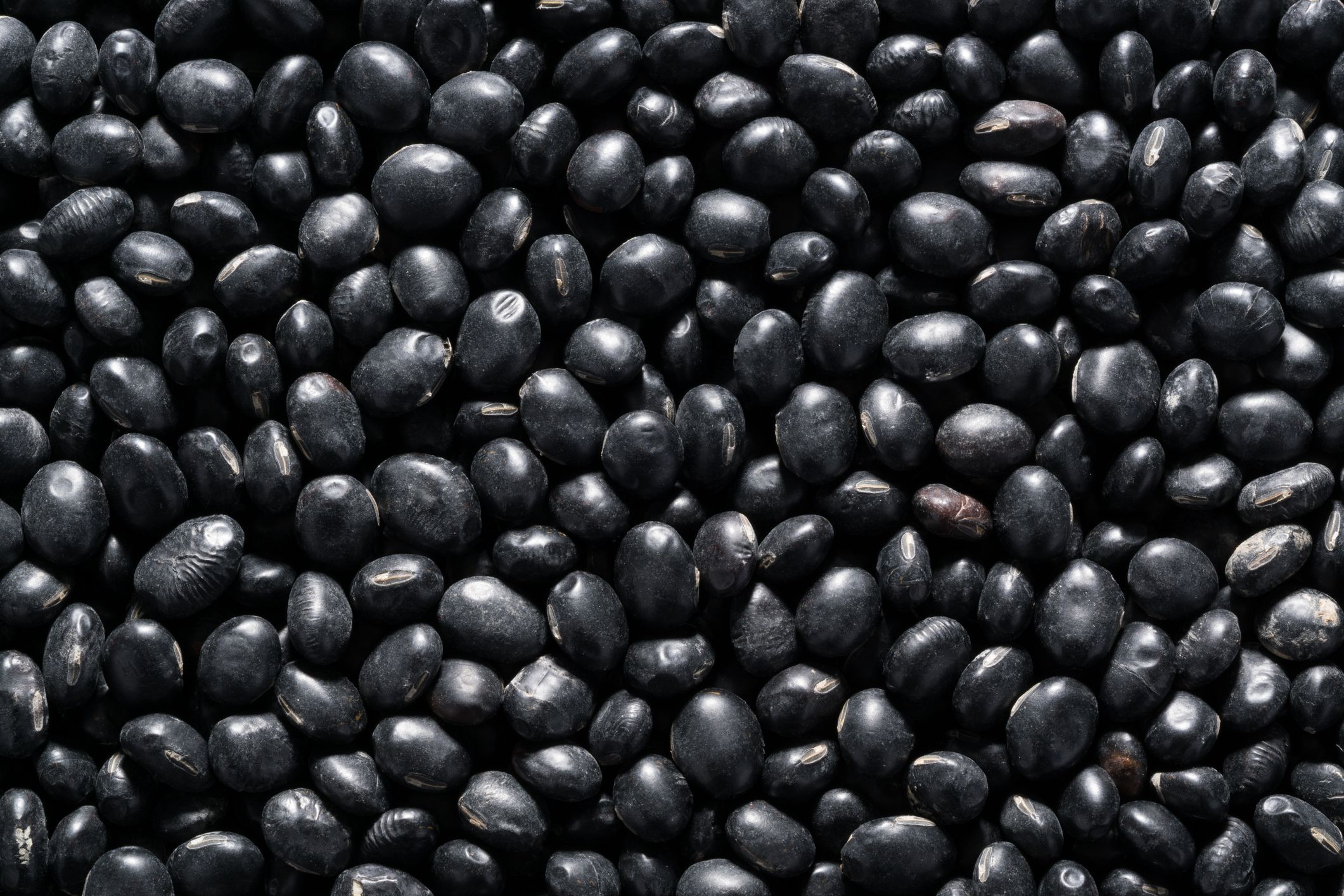
©Getty Images
16) Black beans
Black beans are some of the lowest-kilojoule beans you can eat, at 912kJ per ½ cup. Better yet, they’re also loaded with protein and fibre, a winning combo that can help stave off overeating, Spence explains.
Their fibre combined with a lack of cholesterol also makes them a heart-healthy choice, just look for varieties without added salt.
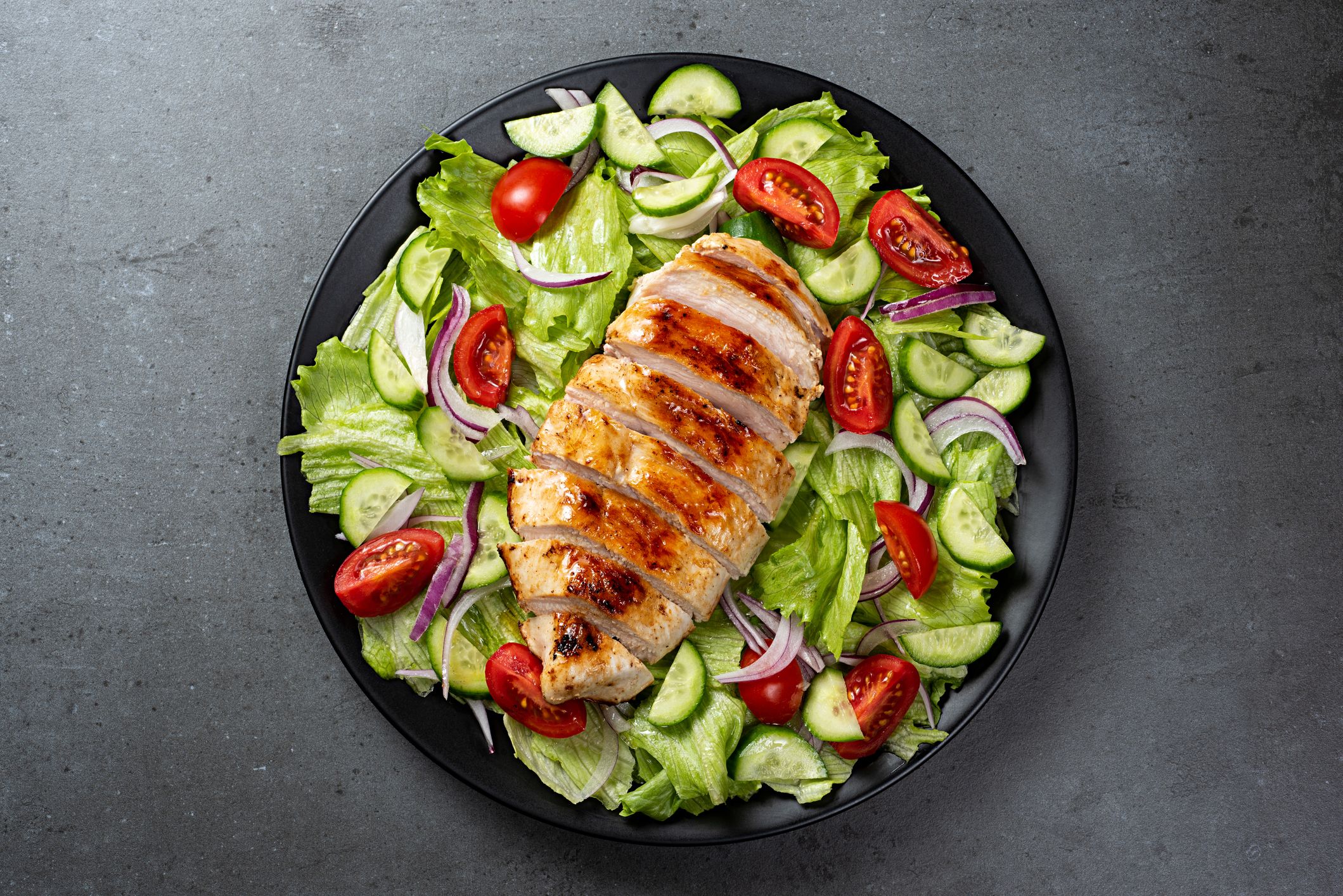
©Getty Images
17) Chicken
Poultry can pick up extra kilojoules very quickly, but boneless, skinless chicken breast is actually low in kilojoules when grilled (631kJ per 100g serving), Sugiuchi notes. It’s a weight-loss staple for a reason.
In addition to protein, chicken contains a high amount of selenium, a trace mineral necessary for immune function and thyroid health.
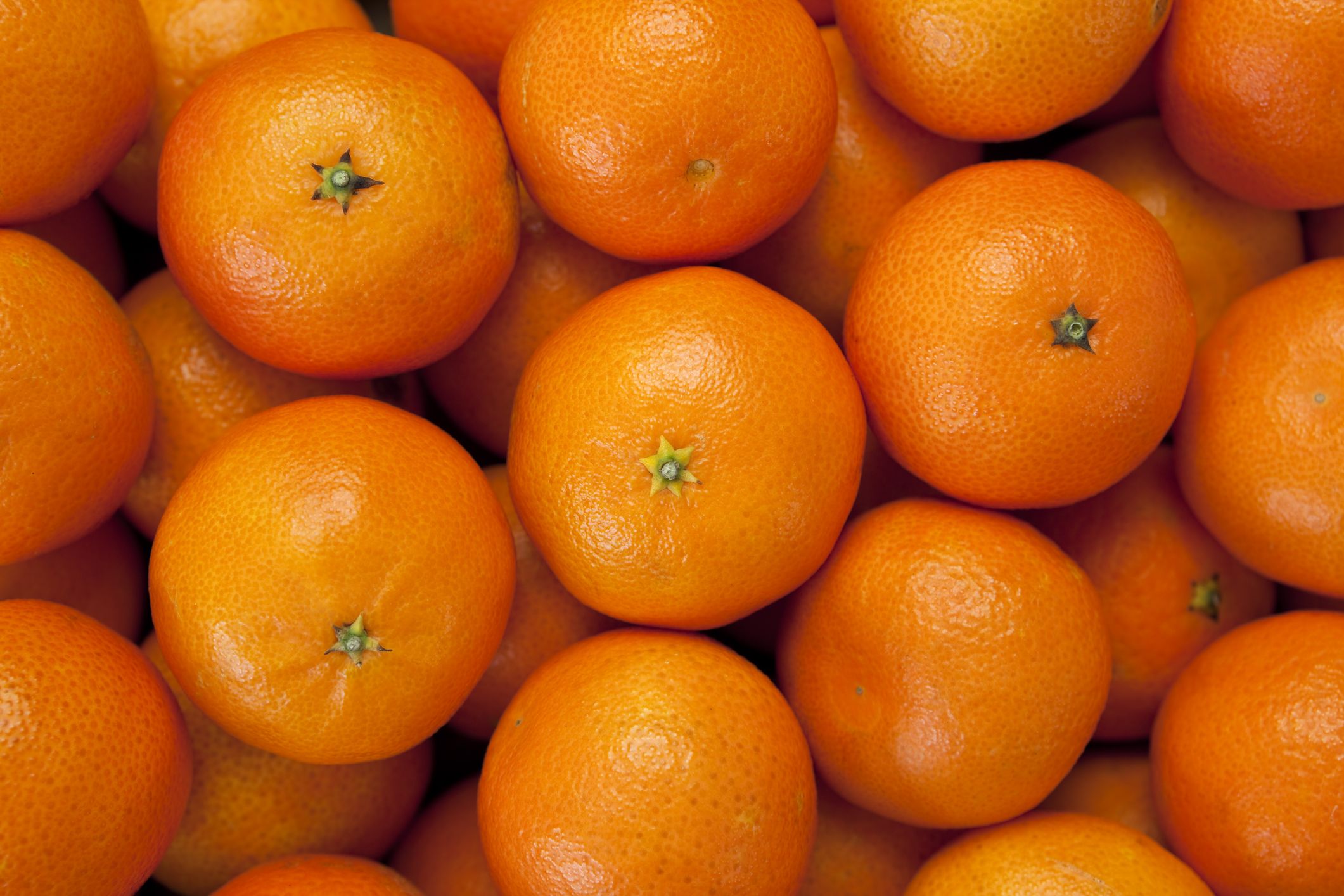
©Getty Images
18) Clementine
Like oranges, they’re a tasty, tangy treat. But unlike their larger cousins, each of these little citrus fruits has just 147kJ. Plus, fruit beats processed desserts by miles.
The snack-size treat is also loaded with vitamin C, clocking about 40% of your daily value in just one fruit.
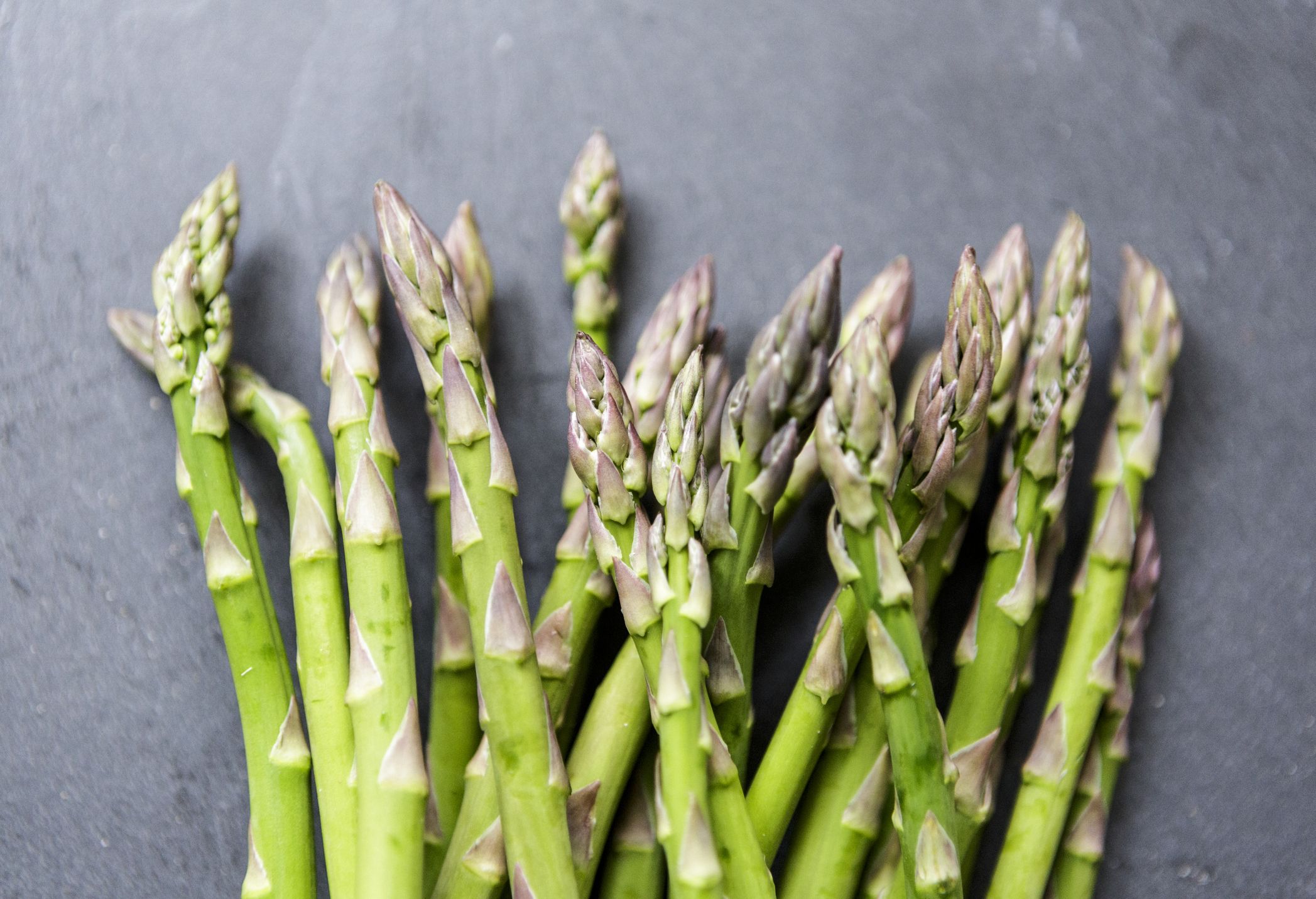
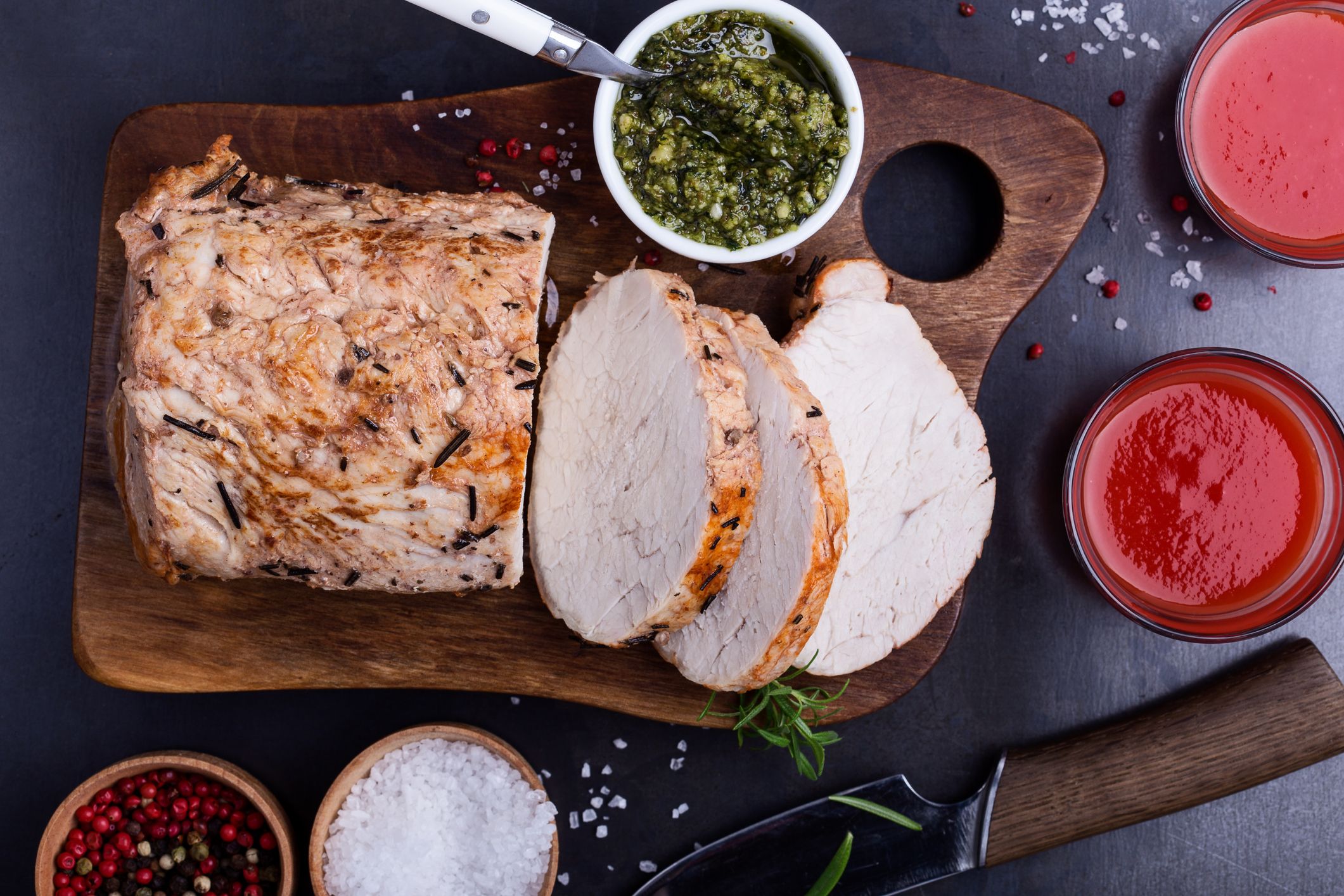
©Getty Images
20) Pork tenderloin
You might not associate pork with the phrase “low-kilojoule,” but cuts like tenderloin are actually super lean, with about 600kJ per 100g serving. And thanks to 26 grams of protein, you’re guaranteed to feel satisfied after your meal.
Pork tenderloin has also received the American Heart Association Heart-Check Certification, meaning it's extra-lean and can be part of a heart-healthy diet.

©Getty Images
21) Strawberries
Strawberries, which have about 195kJ per cup, are rich in a special type of fibre called pectin: “It can help slow digestion and allow you to feel fuller longer,” Palinski-Wade explains.
“It also slows the release of sugar into the bloodstream, helping to prevent hunger-triggering blood sugar spikes.”
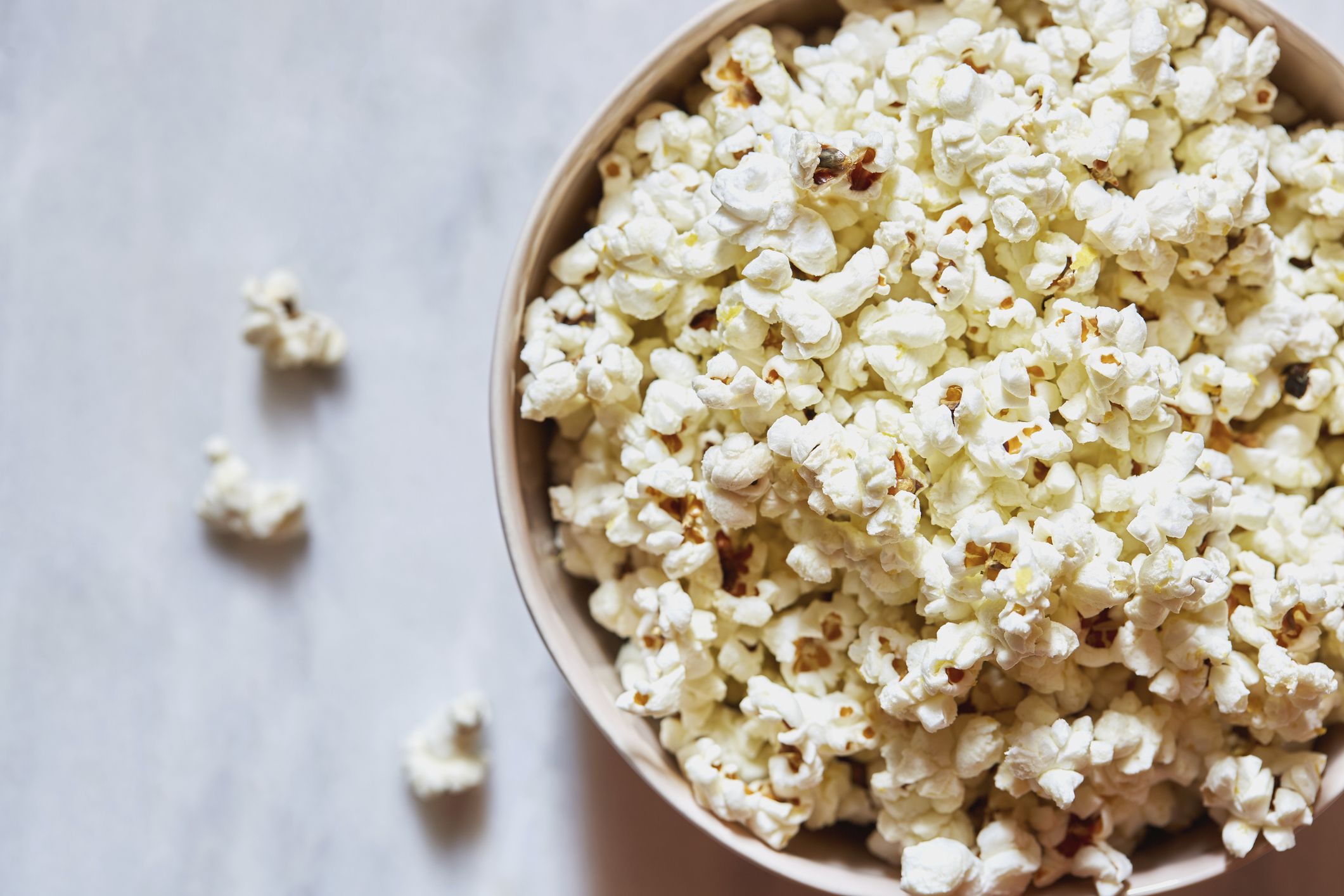
©Getty Images
22) Popcorn
Unlike most other salty snacks, air-popped popcorn is pretty low in kilojoules. Each air-popped cup has about 130kJ and a bit of filling fibre. Plus, a 2012 study suggests that it’s actually more satisfying than competing finger foods.
Air-popped and lightly seasoned, this whole grain is actually a healthy snack. According to the American Heart Association, high-fibre whole grains have been linked to a lower risk of heart disease, diabetes, and some cancers.
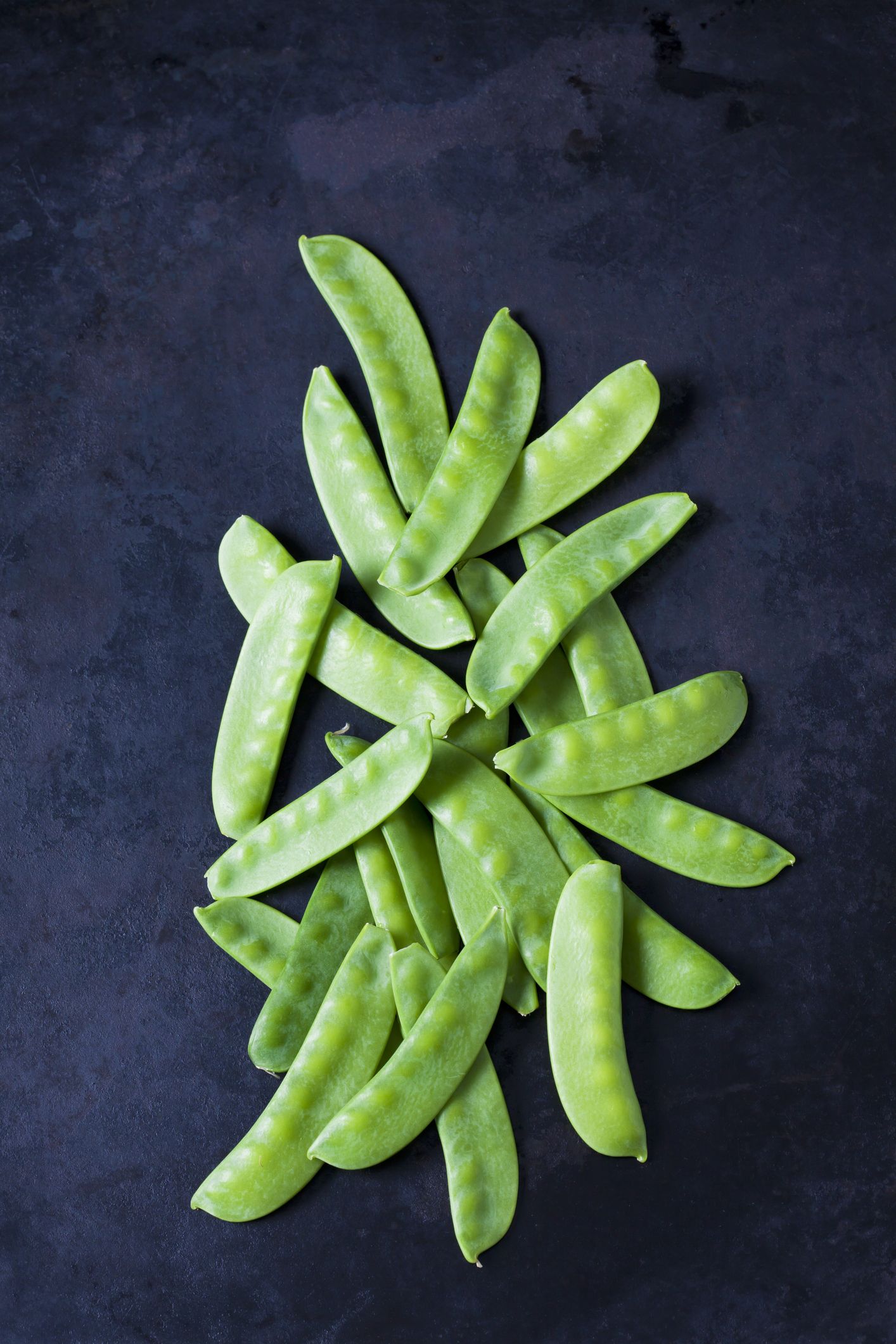
©Getty Images
23) Snow peas
There are only 172kJ in a cup of the crisp green pods, but there’s a ton of different ways to use them. Whether you enjoy them raw or toss them in a salad, stir-fry, or pasta, they’re sure to hit the spot.
Like many of the other fruits and veggies on this list, it's full of the antioxidant vitamin C.
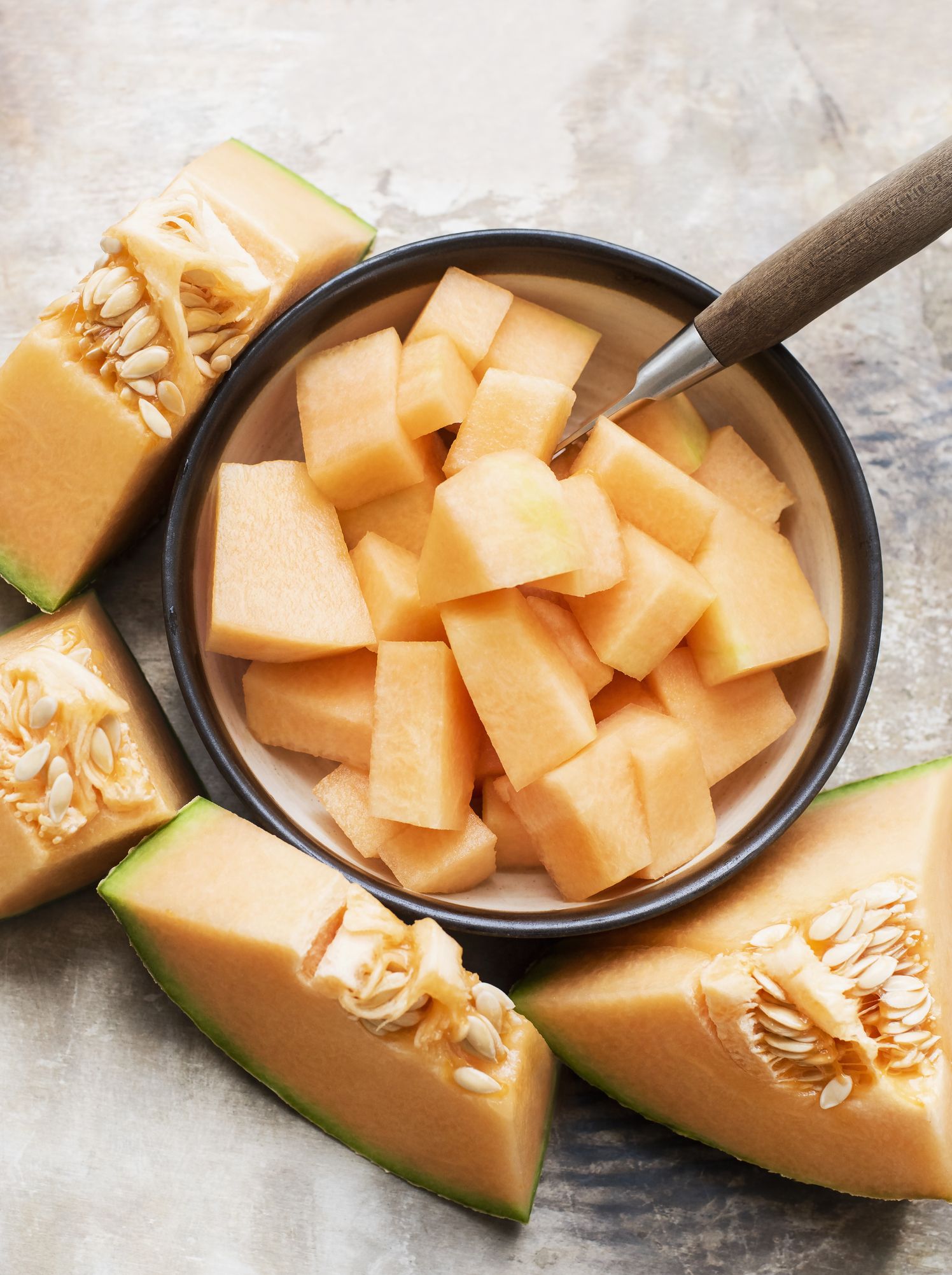
©Getty Images
24) Rockmelon
Melons like rockmelon (also known as cantaloupe) have a high water content, so they’ll fill you up for very few kilojoules, says Spence. Case in point? An entire cup of cantaloupe is just 149kJ.
Cantaloupe is full of the carotenoid beta-carotene, which gives the fruit its orange hue.
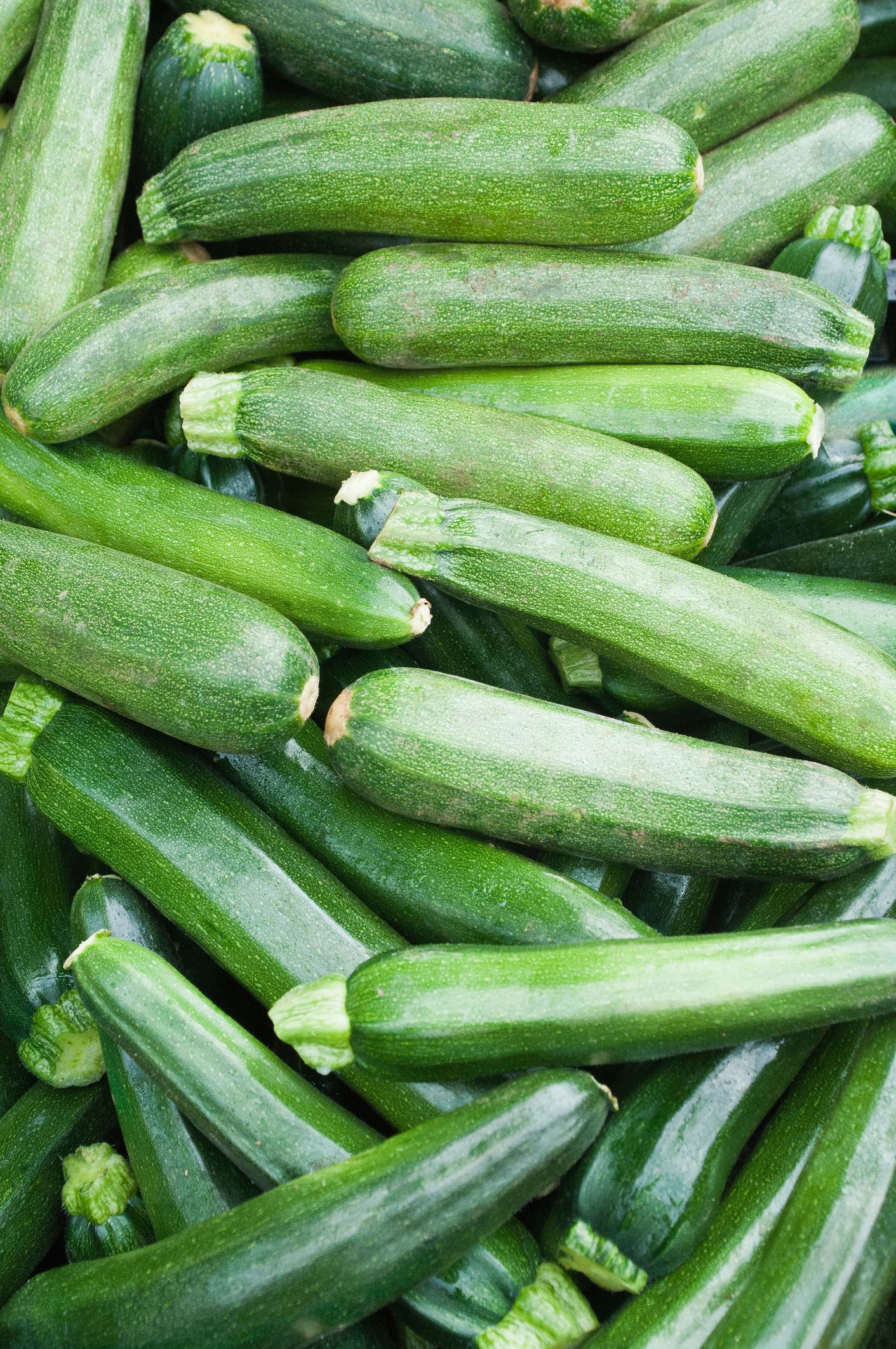
©Getty Images
25) Zucchini
Zucchini (and its close cousin, yellow squash) has a super-low kilojoule count, 114kJ per cup, and loads of culinary potential. Don’t be afraid to get creative (or go for seconds).
It contains an ample amount of vitamin A (about 40% of your daily value in one cup of cooked zucchini), which is great for eye health.
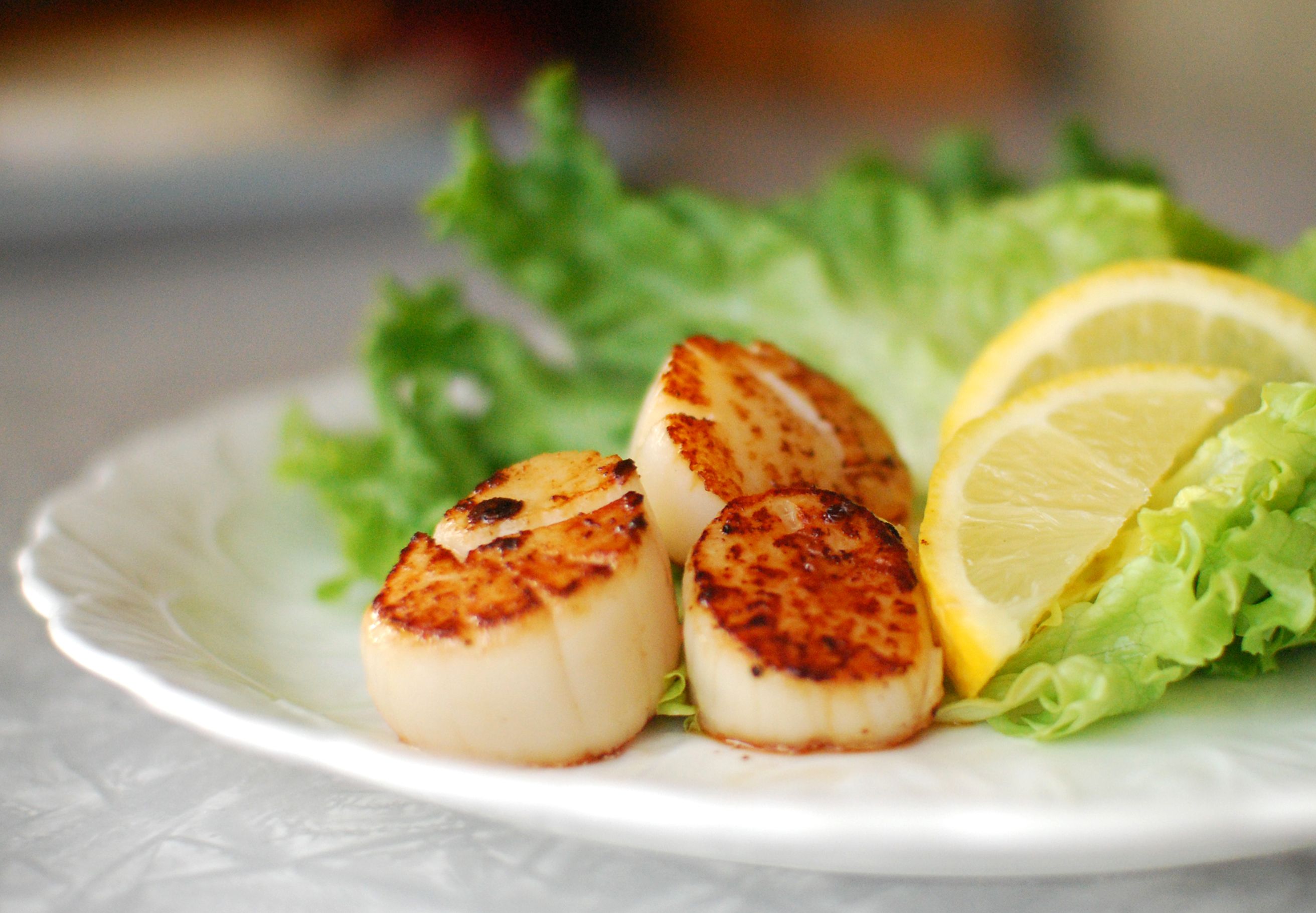
©Getty Images
26) Scallops
They might taste indulgent, but one serving of scallops has a measly number of kilojoules—just 466kJ in 100g.
Despite the low kilojoules count, scallops are rich in omega-3 fatty acids, heart-healthy fats that will help keep you full, too.
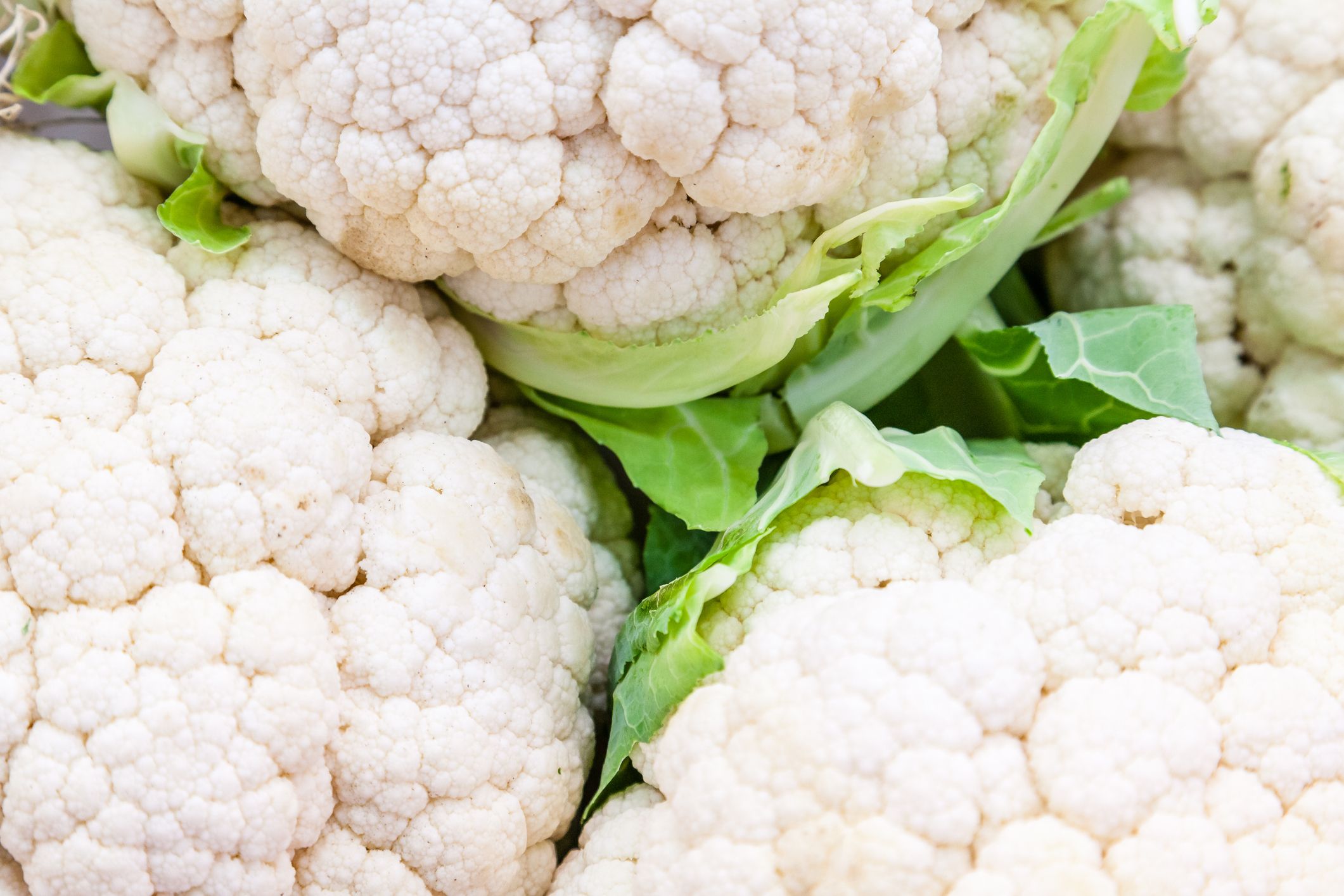
©Getty Images
27) Cauliflower
Cauliflower is a good source of vitamin C, potassium, and plant-based omega-3 fatty acids, and this versatile veggie can be used in place of higher-carb foods in some of your favorite dishes.
One cup of cooked cauliflower has just under 119kJ, and its mild taste can be seasoned in so many tasty ways. With a firm, hearty texture, it's main-dish worthy.
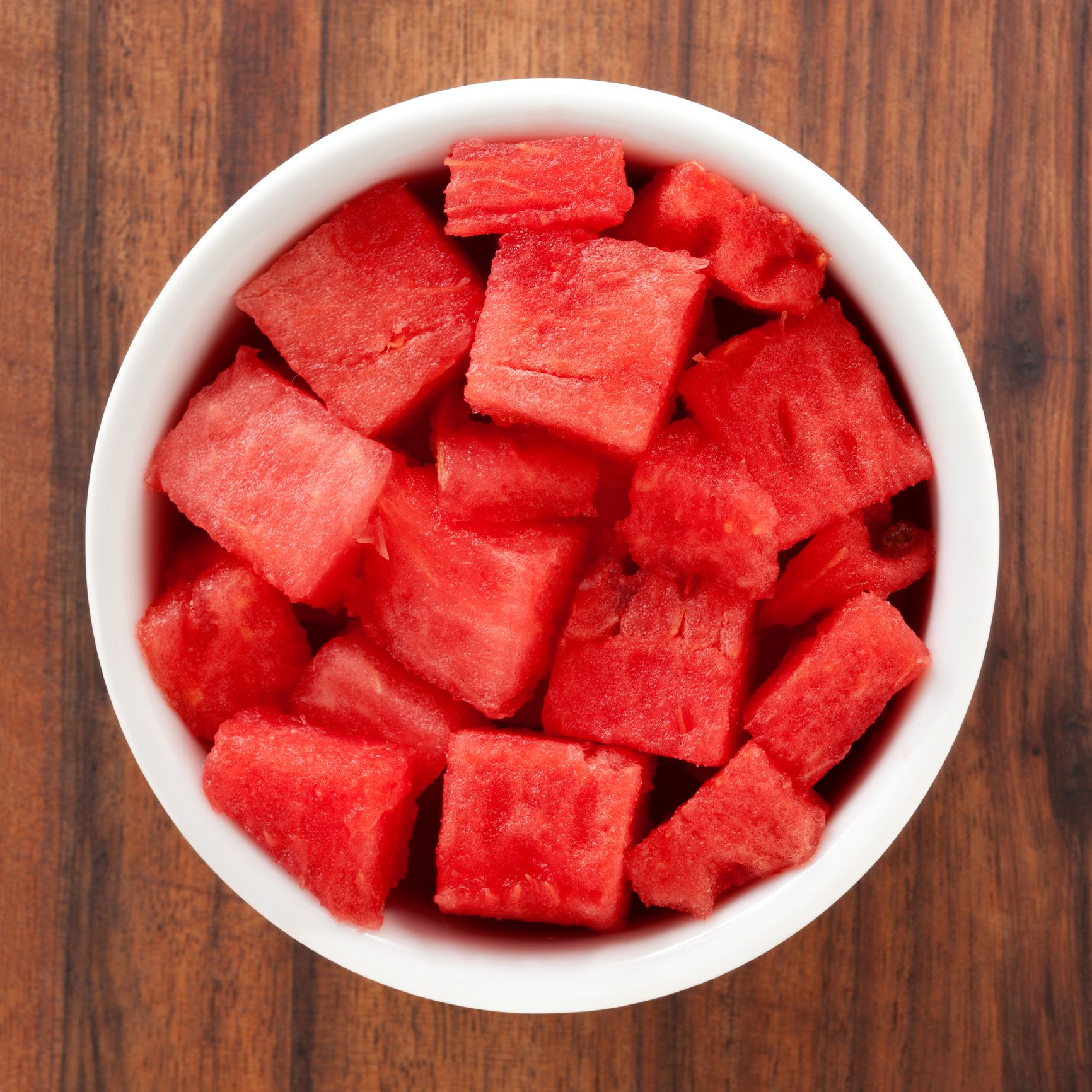
©Getty Images
28) Watermelon
Not only is watermelon a great sweet treat to have on a hot day, it also boasts many benefits for your skin. And for just 200kJ per cup, this fruit is a great low-kilojoule option for an afternoon-snack.
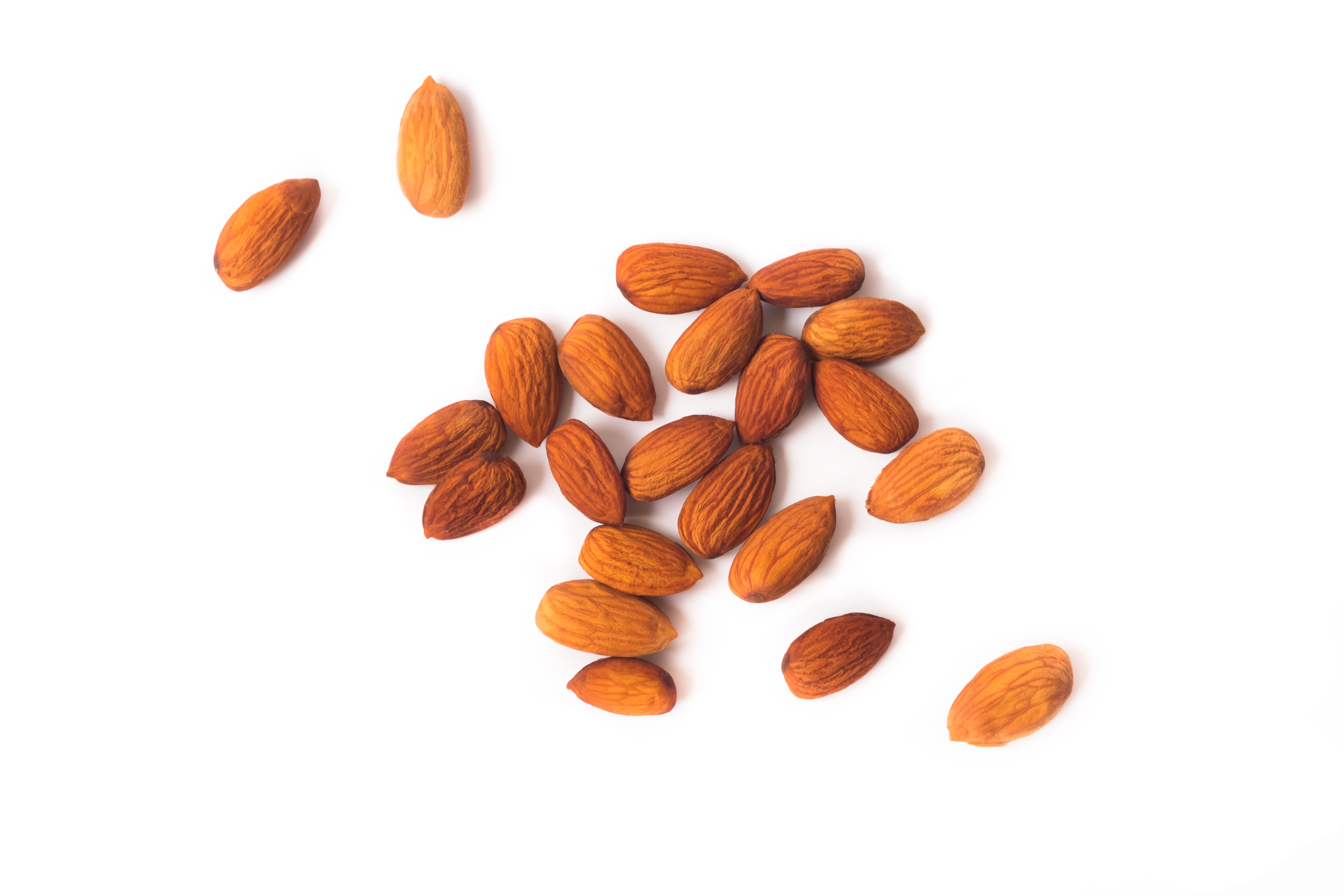
©Getty Images
29) Almonds
Nuts can be considered low-kilojoule when eaten in moderation, Sugiuchi says, so stick to the serving size. For almonds, that’s about 23 nuts, which contains 686kJ. They’re a great source of protein and healthy fats, but a little goes a long way.
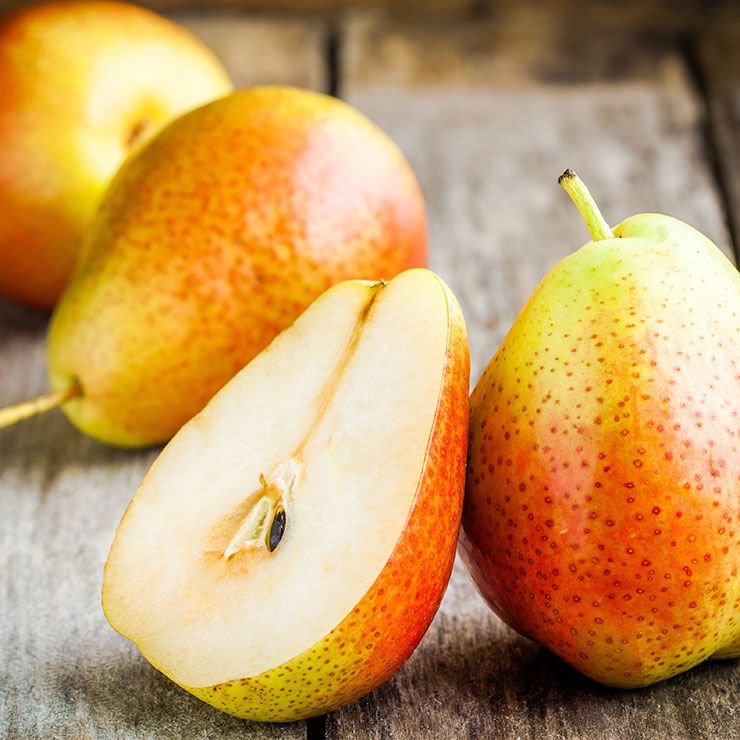
©Getty Images
30) Pears
One medium pear has 420kJ and 4.5g of satiating fibre, about 15% of the recommended daily value for fibre, says dietitian Jessica Levinson.
“The fibre is found in the skin, so be sure not to peel your pears before eating.”
Research shows that obesity rates are lower in consumers who eat fresh pears and eating three pears a day increased weight loss significantly.
“In addition to enjoying pears as a snack, add them to salads, bake or poach them for dessert, or purée them to make pear sauce,” Levinson suggests.
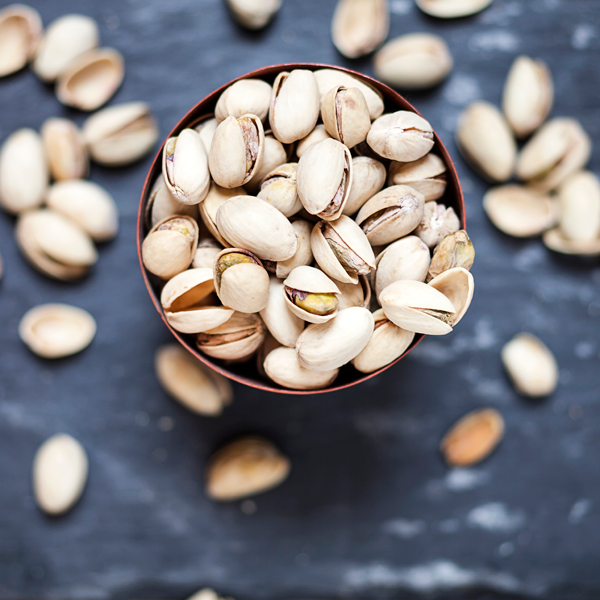
©Getty Images
31) Pistachios
Pistachios are the only nut that is a complete protein and you get the most bang for your buck, says Levinson. A 30g serve is about 30 kernels, which has 2,542kJ.
Research shows that pistachio consumption is associated with increased fibre intake, decreased consumption of sweets, and reduced body weight.
When snacking on pistachios, choose in-shell pistachios when possible, suggests Levinson. “The process of taking them out of the shell will slow you down leaving you feeling more satiated.”
Try adding them to salads or chop them and use in place of breadcrumbs as a coating for chicken or fish.
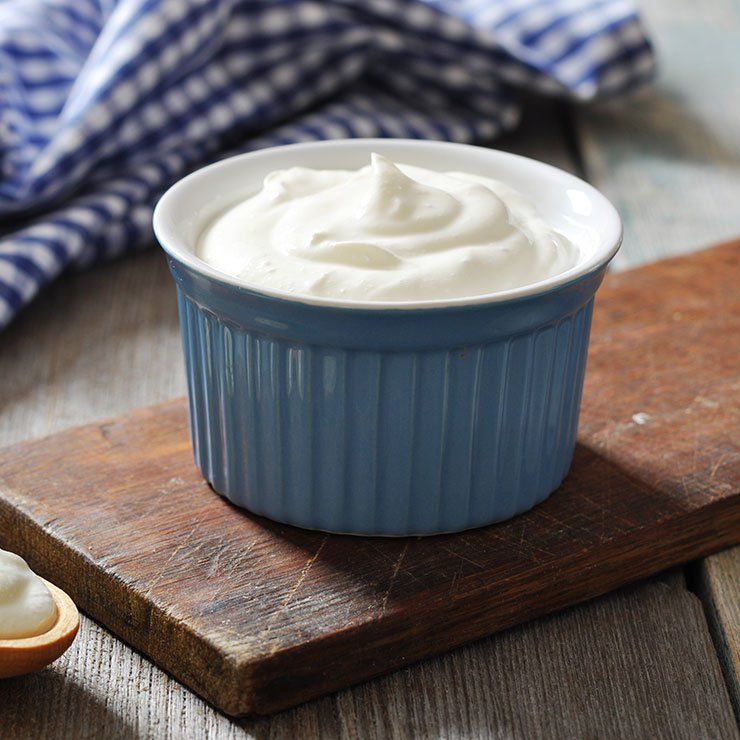
©Getty Images
32) Greek yoghurt
Along with having less than 360kJ per 100ml, a typical container of plain Greek yoghurt also has 8g of protein, so it will leave you feeling satisfied.
“I recommend adding some berries for a bit of sweetness and fibre, while still keeping kilojoule count low,” says Zinn.
Different brands have very different sugar, fat and kilojoules, so shop around for one that's right for you.
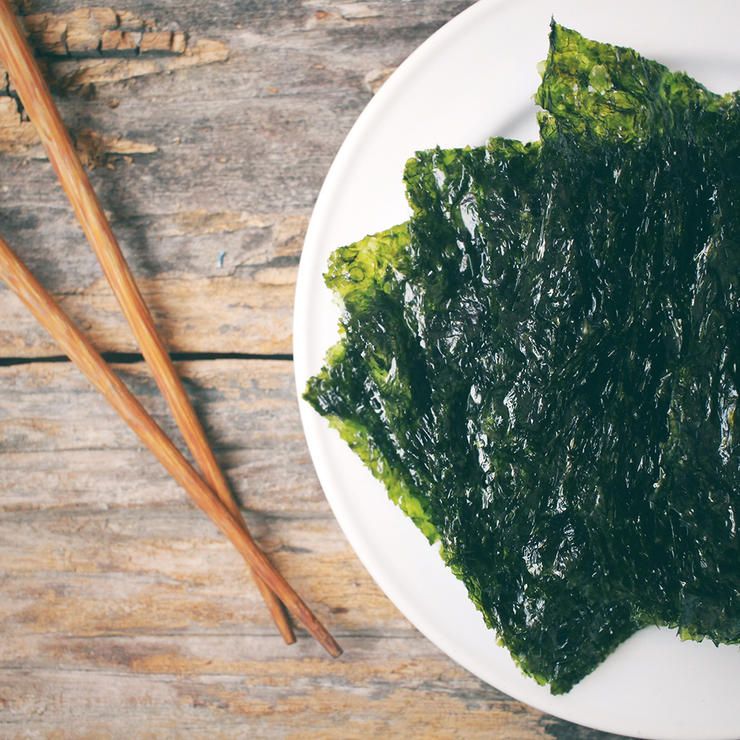
©Getty Images
33) Seaweed
This often-forgotten sea vegetable with 187kJ per cup provides freshness and umami to dishes. It’s loaded with iodine and is great frozen in smoothies, salads, and seafood dishes.





.jpg&h=193&w=250&c=1&s=1)
